Pakistan’s northernmost region, Gilgit-Baltistan, is a land where towering mountains pierce the sky, serene lakes reflect the grandeur of their surroundings, and ancient cultures whisper tales of resilience. Often referred to as the “crown jewel” of Pakistan, this captivating region beckons adventure seekers, nature enthusiasts, and history buffs alike. Imagine carving your path through valleys adorned with vibrant wildflowers, gazing upon glaciers that dwarf human existence, or exploring historic forts that stand as testaments to a rich past. Gilgit-Baltistan promises an unforgettable journey, where breathtaking beauty intertwines with cultural richness to create an experience that will leave you spellbound.
This article delves into the captivating allure of Gilgit-Baltistan, unveiling its most beautiful places. From the majestic peaks of the Karakoram to the serene Shangri-La valley, we’ll explore the region’s diverse landscapes, uncover hidden gems, and provide valuable insights to plan your own unforgettable adventure.
Valleys
Skardu Valley
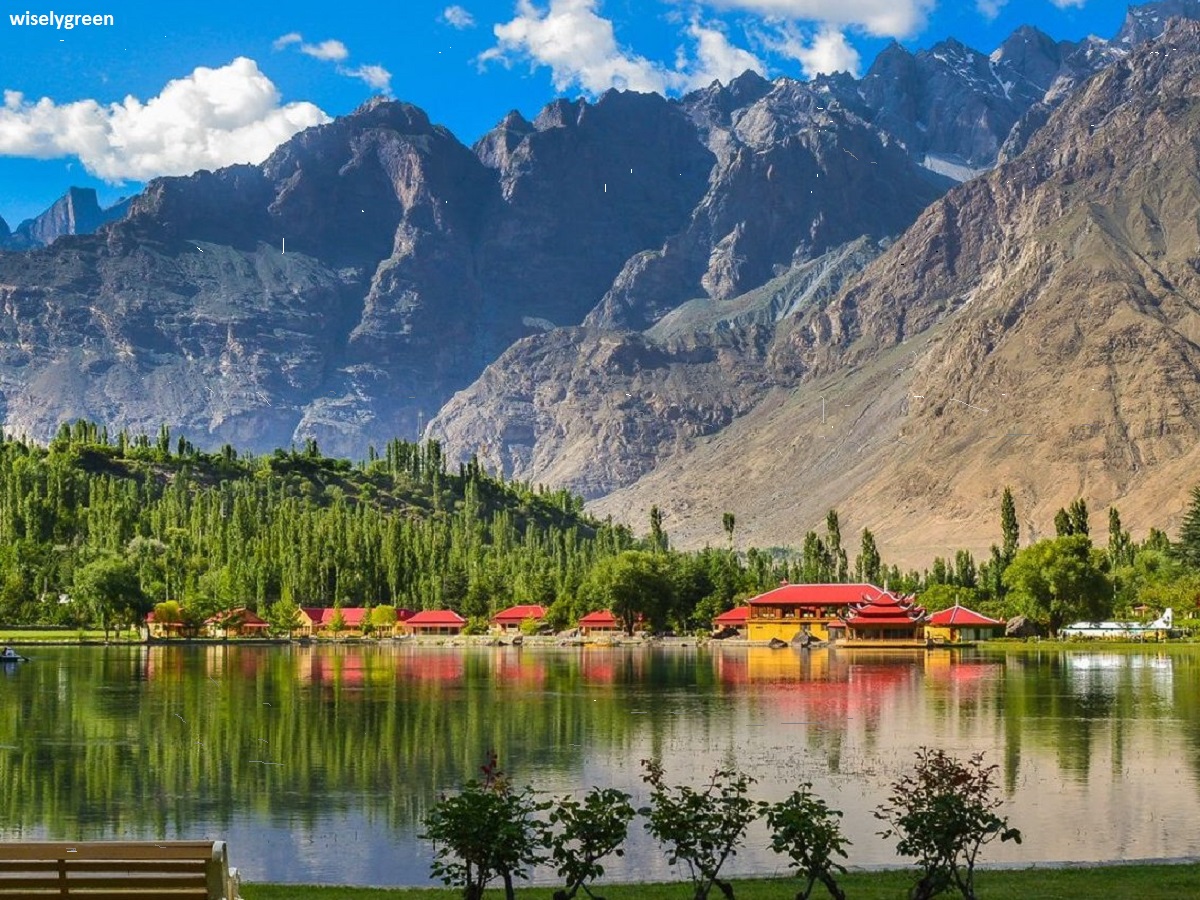
Nestled amidst the awe-inspiring peaks of the Karakoram mountain range lies Skardu, a captivating town in Pakistan’s Gilgit-Baltistan region. Imagine a place where snow-capped giants pierce the azure sky, emerald valleys unfurl like a painter’s canvas, and ancient history whispers from timeworn forts. Skardu is a destination that transcends mere sightseeing; it’s an immersive experience where adventure, culture, and breathtaking beauty collide.
This charming town, perched at an elevation of over 8,000 feet, serves as the gateway to some of Pakistan’s most stunning landscapes. Hikers can embark on challenging treks to witness the colossal K2, the world’s second-highest peak. Nature lovers can find solace in the tranquility of Shangri-La Valley, a haven of serene lakes and vibrant meadows. History buffs will be enthralled by the imposing Skardu Fort, a silent sentinel guarding the town for centuries.
Beyond its natural wonders and historical treasures, Skardu offers a glimpse into the warm hospitality of the Balti people. Their unique culture, reflected in traditional architecture and vibrant festivals, adds another layer of richness to the Skardu experience.
Whether you’re a seasoned adventurer or simply seeking a serene escape, Skardu’s captivating allure promises an unforgettable journey. So, pack your bags, embrace the spirit of exploration, and get ready to be enthralled by the magic of Skardu.
Read More About Skardu Valley
Hunza Valley
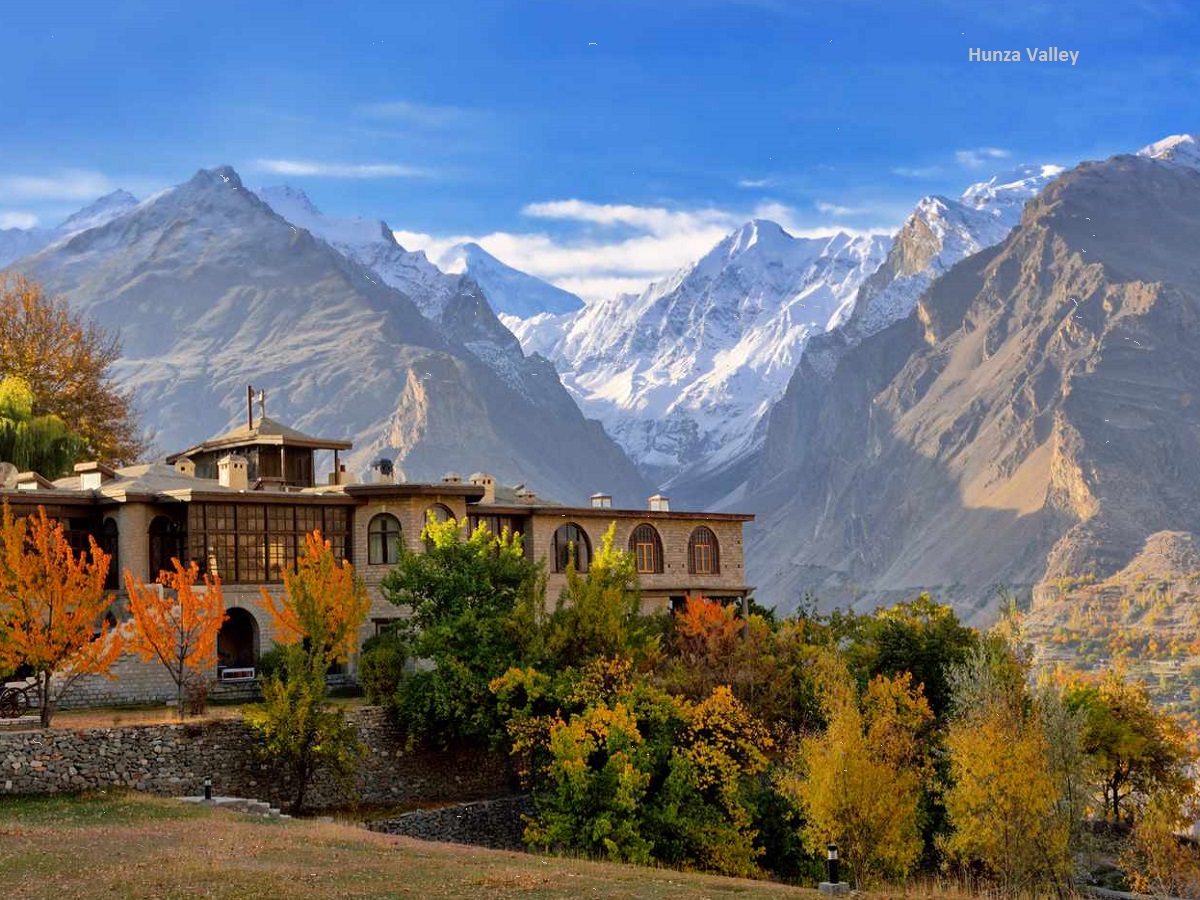
Imagine a valley nestled amidst the majestic peaks of the Himalayas, where emerald meadows stretch as far as the eye can see, and ancient watchtowers stand sentinel, whispering tales of bygone eras. This is Hunza, a captivating region in Pakistan’s Gilgit-Baltistan, shrouded in a mystique that beckons travelers seeking a glimpse of paradise.
Once a thriving principality renowned for its strategic location and unique culture, Hunza has evolved into a haven for nature lovers and adventure enthusiasts. Hikers can traverse challenging trails, rewarded with breathtaking panoramic views of snow-capped peaks. Culture vultures can delve into the rich heritage of the Wakhi people, their traditions reflected in ancient forts and vibrant festivals.
Beyond its scenic beauty and cultural tapestry, Hunza is also known for its legendary longevity. For decades, stories have circulated about the exceptional lifespan of its inhabitants, adding a touch of intrigue to the region’s allure. Whether you’re seeking a tranquil escape amidst breathtaking scenery, an adventure into the heart of ancient history, or a chance to unravel the secrets of longevity, Hunza promises an unforgettable journey.
Read More About Hunza Valley
Nagar Valley
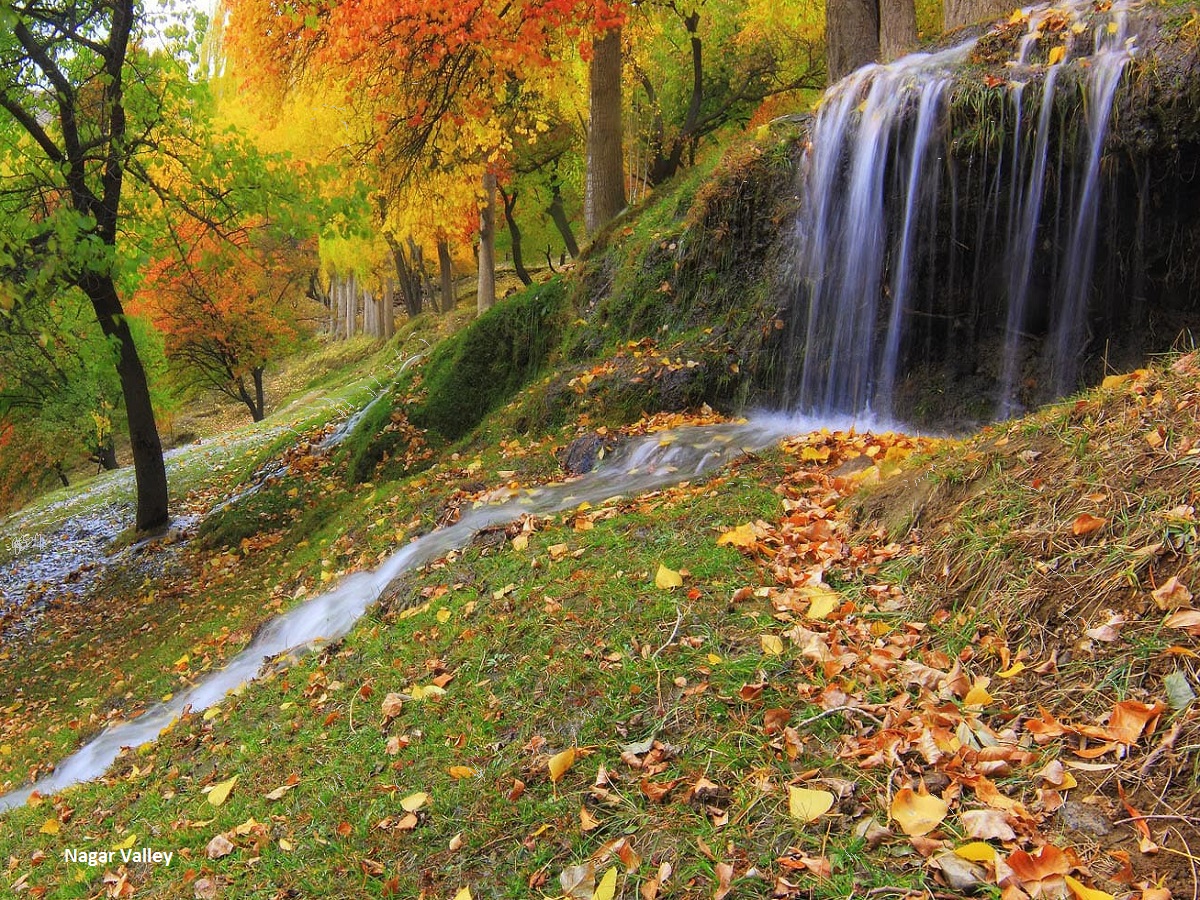
Pakistan’s Gilgit-Baltistan region harbors a treasure trove of hidden gems, and Nagar Valley stands as one such gem, waiting to be discovered. Imagine a land where towering mountains pierce the clouds, glacial rivers carve their way through lush valleys, and ancient villages retain a sense of timeless charm. Nagar Valley, nestled amidst the majestic peaks of the Karakoram, offers a unique blend of breathtaking beauty, rich cultural heritage, and a chance to experience an off-the-beaten-path adventure.
Once a flourishing princely state, Nagar boasts a rich history that resonates in its timeworn forts and traditional villages clinging to mountain slopes. Here, the Burushaski language, spoken by the indigenous people, adds a layer of intrigue to the already captivating experience. For nature lovers, Nagar Valley is a paradise. Hike through meadows bursting with wildflowers, trek to the base of awe-inspiring glaciers, or simply relax beside the roaring Rushan River, the highest alpine lake in Pakistan.
Nagar caters to adventurers of all levels. Experienced hikers can challenge themselves on high-altitude treks, while casual explorers can enjoy leisurely walks through charming villages and soak in the stunning scenery. The warmth and hospitality of the local people add another dimension to the Nagar experience. Embrace a cup of chai (tea) with a local family, learn about their unique traditions, and gain a deeper appreciation for this captivating region.
Whether you’re seeking an escape from the ordinary, a chance to explore a hidden gem, or a glimpse into a vibrant culture, Nagar Valley promises an unforgettable adventure. So, pack your bags, embrace the spirit of discovery, and get ready to be captivated by the untamed beauty of Nagar.
Read More About Nagar Valley
Chilas Valley
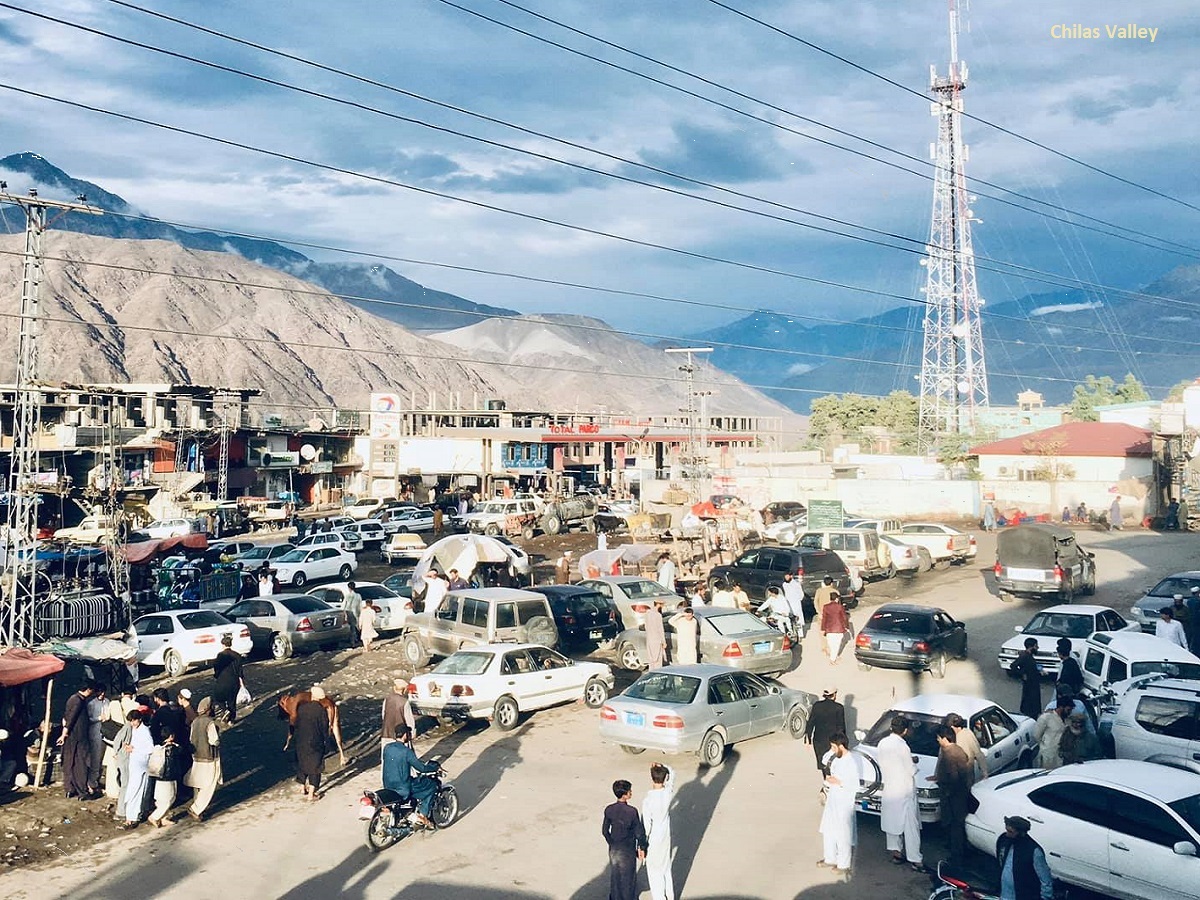
Imagine a vibrant town nestled amidst the majestic peaks of the Himalayas, where the mighty Indus River carves its path through fertile valleys. This is Chilas, a captivating destination in Pakistan’s Gilgit-Baltistan region, serving as a crucial crossroads for adventure and cultural exploration.
Chilas, meaning “forty springs” in the local language, boasts a rich history as a trading hub on the ancient Silk Road. Today, it remains a vital link between the bustling cities of Gilgit and Skardu, offering travelers a taste of both the region’s natural wonders and its diverse cultural tapestry.
Beyond its strategic location, Chilas captivates with its breathtaking scenery. Towering mountains, snow-capped and majestic, form a dramatic backdrop to the town. The emerald waters of the Indus River snake through the valley, offering a sense of tranquility and a perfect spot for a peaceful afternoon. For nature enthusiasts, Chilas serves as a gateway to Fairy Meadows National Park, a haven of vibrant meadows and a base camp for treks to the awe-inspiring Nanga Parbat, the ninth highest peak in the world.
Chilas isn’t just about breathtaking vistas; it’s also a place where history whispers from ancient forts and traditional villages. Explore the centuries-old mudbrick houses, each one a testament to the region’s rich heritage. Delve into the vibrant culture of the local people, their traditions reflected in colorful attire, lively festivals, and the warmth of their hospitality.
Whether you’re a seasoned adventurer seeking a challenging trek, a nature lover yearning for breathtaking scenery, or a history buff intrigued by ancient cultures, Chilas promises an unforgettable experience. So, pack your bags, embrace the spirit of exploration, and get ready to be captivated by the enchanting crossroads of Chilas.
Read More About Chilas Valley
Diamer
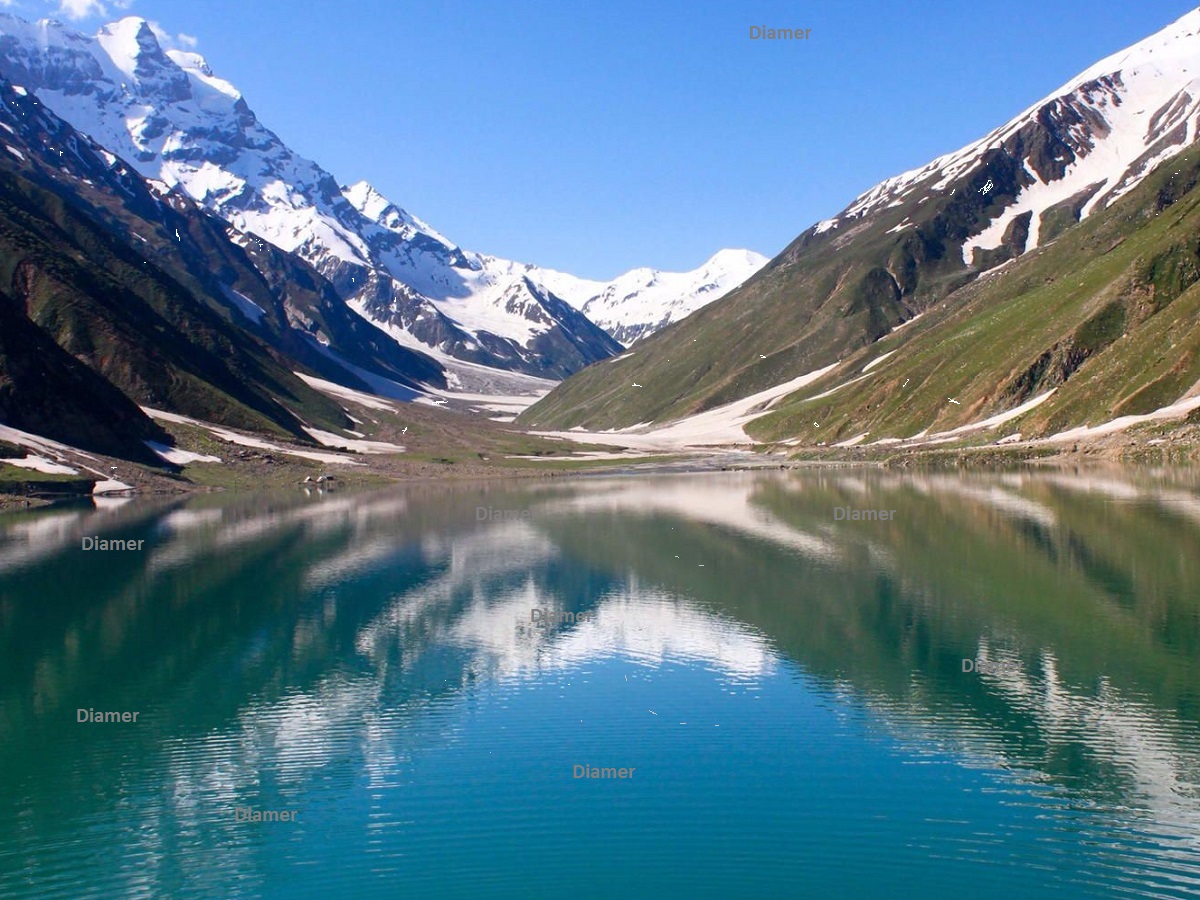
Pakistan’s Gilgit-Baltistan region boasts a treasure trove of captivating destinations, each offering a unique blend of natural beauty, cultural richness, and adventure. Diamer Valley, nestled amidst the majestic peaks of the Himalayas, stands as a gateway to this enchanting realm. Imagine a land where emerald valleys unfurl like a painter’s canvas, glistening rivers carve their paths through rugged terrain, and ancient petroglyphs whisper tales of a bygone era. Diamer promises an unforgettable journey for those seeking an off-the-beaten-path adventure.
Diamer, meaning “land of iron” in the local Shina language, hints at the region’s rugged beauty. Towering mountains, snow-capped and awe-inspiring, dominate the landscape, offering a sense of adventure and a photographer’s paradise. The mighty Indus River, a lifeline for the region, snakes through the valley, providing a source of sustenance and a backdrop for peaceful moments amidst nature’s grandeur.
Beyond its breathtaking scenery, Diamer boasts a rich history waiting to be explored. Ancient rock carvings, known as petroglyphs, adorn the cliffsides, offering a glimpse into the lives of past inhabitants. Traditional villages, nestled amidst the valleys, showcase a unique way of life that has endured for centuries. The warmth and hospitality of the local people add another layer of charm to the Diamer experience. Engage in conversations with locals, learn about their traditions, and gain a deeper appreciation for this captivating region.
Diamer serves as a base camp for exploring further into the wonders of Gilgit-Baltistan. Adventurers can embark on challenging treks to conquer peaks like Nanga Parbat, the ninth highest mountain in the world. Nature lovers can find solace in the tranquility of Fairy Meadows National Park or explore the hidden beauty of the Tangir and Darel valleys. For those seeking a more relaxed experience, Diamer offers opportunities for leisurely walks, horseback riding through picturesque meadows, or simply soaking up the stunning scenery with a cup of local chai (tea).
Whether you’re a seasoned explorer yearning for adventure, a nature lover seeking a tranquil escape, or a history buff intrigued by ancient cultures, Diamer promises an unforgettable journey. So, pack your bags, embrace the spirit of discovery, and get ready to be captivated by the enchanting gateway of Diamer.
Read More About Diamer
Gupis Valley
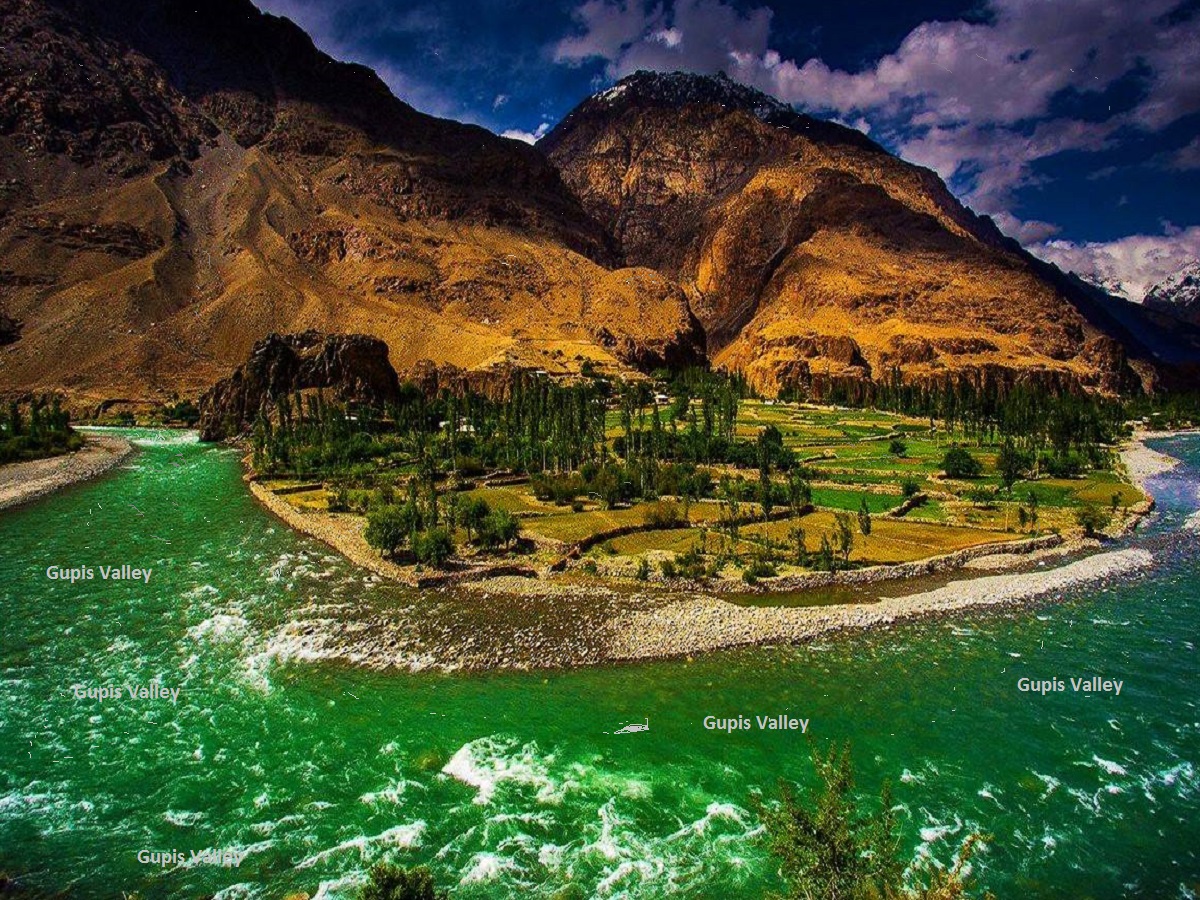
Nestled amidst the towering peaks of the Hindu Kush range in Pakistan’s Gilgit-Baltistan region lies Gupis, a captivating valley waiting to be discovered. Imagine a haven of tranquility where emerald green meadows unfurl beneath a cerulean sky, pristine rivers wind through the valley floor, and a rich cultural heritage whispers from ancient villages. Gupis offers a unique blend of breathtaking beauty, off-the-beaten-path adventure, and a glimpse into a way of life untouched by time.
Gupis, meaning “goopechh valley” in the local language, translates to “land of hidden treasures.” And hidden treasures it truly holds. For nature lovers, Gupis offers a paradise. Hike through vibrant meadows bursting with wildflowers, cast a line into the crystal-clear waters of the Gilgit River teeming with trout, or simply relax amidst the serene beauty and breathe in the crisp mountain air. Adventure seekers can embark on challenging treks to the Darkot Pass, a high-altitude gateway offering breathtaking panoramic views of the surrounding peaks.
Beyond its natural wonders, Gupis boasts a rich cultural heritage waiting to be explored. Timeworn villages, built from local stone and wood, cling to the mountainsides, each a testament to the region’s history. The warmth and hospitality of the local people, known for their unique customs and traditions, adds another layer of charm to the Gupis experience. Learn a few basic Urdu phrases to enhance your interactions and gain a deeper appreciation for their way of life.
Gupis serves as a perfect base camp for exploring further into the wonders of Gilgit-Baltistan. Venture to nearby Phander Valley, renowned for its trout fishing, or embark on a journey to the mystical Yasin Valley, known for its glaciers and ancient glaciers. For those seeking a more cultural experience, explore the historical forts and shrines scattered throughout the region, each offering a glimpse into the past.
Whether you’re a nature enthusiast yearning for breathtaking scenery, an adventure seeker craving off-the-beaten-path exploration, or a culture buff intrigued by unique traditions, Gupis promises an unforgettable journey. So, pack your bags, embrace the spirit of discovery, and get ready to unearth the hidden treasures of Gupis.
Read More About Gupis Valley
Yasin Valley
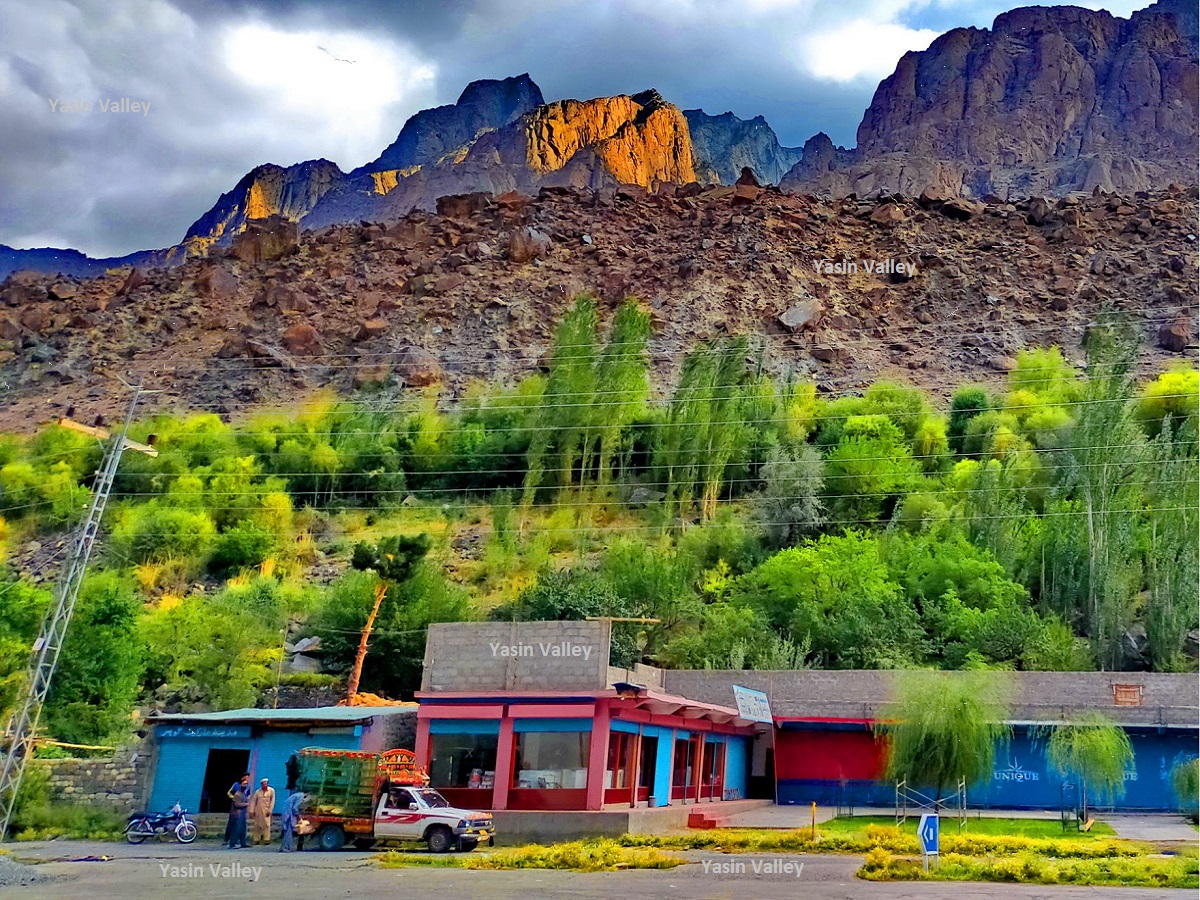
Imagine a hidden valley nestled amidst the majestic peaks of the Hindu Kush, where glaciers carve their paths through rugged terrain, crystal-clear streams wind through vibrant meadows, and ancient watchtowers stand sentinel, whispering tales of a bygone era. This captivating haven is Yasin Valley, a jewel within Pakistan’s Gilgit-Baltistan region, offering an unforgettable escape for those seeking a unique blend of breathtaking beauty, rich cultural heritage, and off-the-beaten-path adventure.
Yasin Valley, meaning “straight meadows” in Urdu, aptly describes its scenic charm. Vast expanses of emerald green meadows stretch as far as the eye can see, dotted with vibrant wildflowers that paint the landscape in a kaleidoscope of colors. Towering mountains, adorned with pristine glaciers, form a dramatic backdrop, creating a sense of awe and wonder. The Yasin River, a lifeblood of the valley, snakes through the meadows, offering opportunities for fishing, rafting, or simply relaxing by its serene waters.
Beyond its mesmerizing scenery, Yasin Valley boasts a rich tapestry of cultures and traditions. Villages, each with its unique charm, cling to the mountainsides. The local people, known for their warm hospitality and vibrant attire, speak a blend of languages, adding another layer of intrigue to the experience. Immerse yourself in their way of life, learn a few basic phrases in Shina or Khowar (local languages), and witness traditional crafts like carpet weaving and wood carving.
Yasin Valley serves as a perfect base camp for exploring further into the wonders of Gilgit-Baltistan. Hike to the base of awe-inspiring glaciers, trek through the dramatic landscape of the Broghil Valley, or challenge yourself on the high-altitude trek to the Ishkoman Valley. For a more cultural experience, visit ancient watchtowers that served as sentinels for centuries, or explore historical shrines that offer a glimpse into the region’s rich past.
Whether you’re a nature enthusiast yearning for breathtaking vistas, an adventurer seeking an off-the-beaten-path challenge, or a culture buff intrigued by unique traditions, Yasin Valley promises an unforgettable journey. So, pack your bags, embrace the spirit of exploration, and get ready to be captivated by the enchanting embrace of Yasin Valley.
Read More About Yasin Valley
Ishkoman Valley
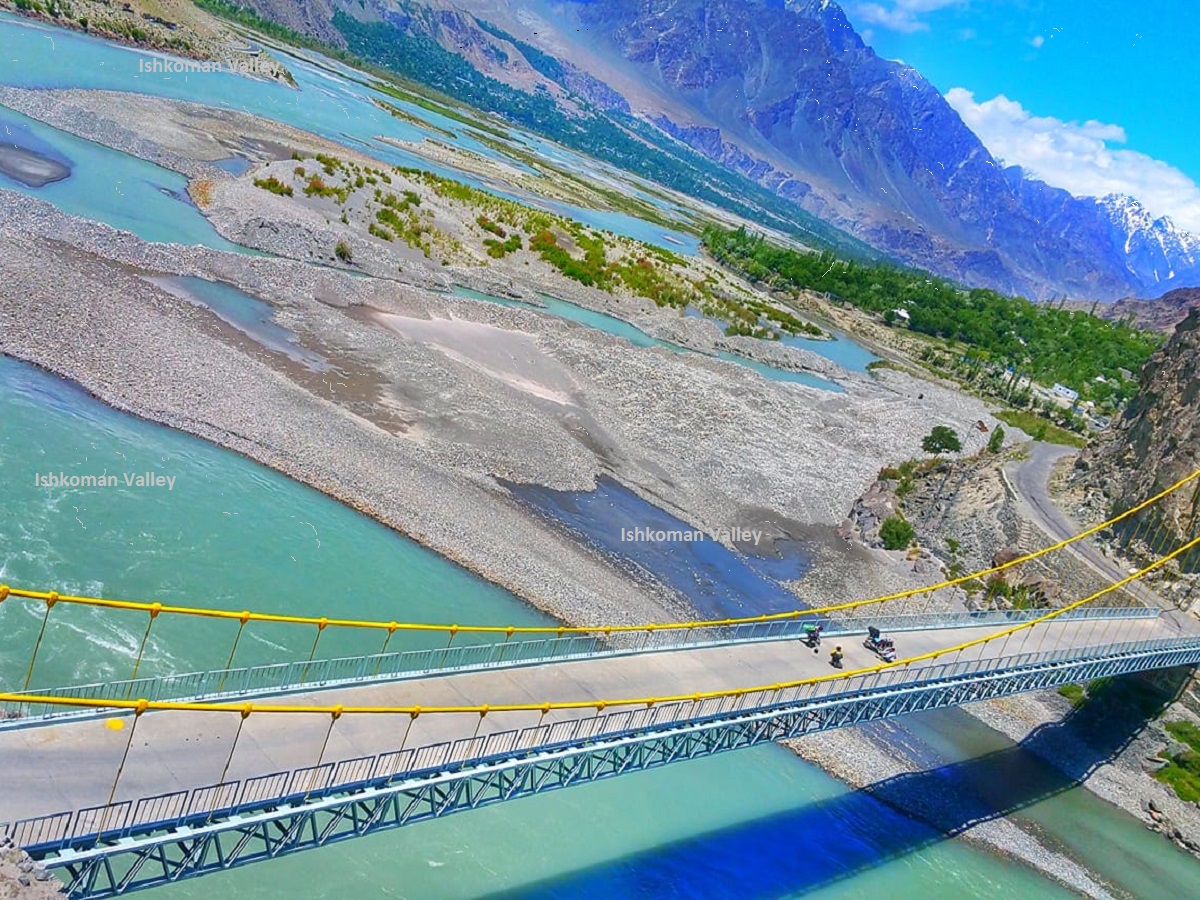
Carved by nature’s hand amidst the majestic peaks of the Hindu Kush and Karakoram ranges lies Ishkoman Valley, a captivating haven in Pakistan’s Gilgit-Baltistan region. Imagine a place where time seems to slow down, vast meadows unfurl like a verdant tapestry, and crystal-clear rivers carve their paths through dramatic landscapes. Ishkoman offers a unique blend of serene beauty, rich cultural heritage, and a chance to reconnect with nature, making it an ideal escape for those seeking tranquility and a taste of local life.
The name “Ishkoman” itself translates to “straight meadows” in Urdu, aptly describing the valley’s defining characteristic. Emerald expanses of rolling grasslands stretch as far as the eye can see, occasionally punctuated by vibrant wildflowers that add a splash of color to the landscape. Towering mountains stand guard, their snow-capped peaks glistening under the sun, creating a sense of awe-inspiring majesty. The Ishkoman River, a lifeblood of the valley, winds its way through the meadows, offering opportunities for peaceful kayaking adventures or simply a place to relax and listen to the gentle murmur of the water.
Beyond the captivating scenery, Ishkoman boasts a rich tapestry of culture waiting to be explored. Small villages, each with its own unique charm, dot the valley floor. The local people, known for their warm hospitality and traditional way of life, will welcome you with open arms. Immerse yourself in their culture, learn a few basic greetings in their native tongue (often a blend of Urdu and Wakhi), and witness traditional crafts like carpet weaving and wood carving. Witnessing these practices firsthand offers a glimpse into the heart and soul of the Ishkoman community.
Ishkoman serves as a haven for those seeking a more peaceful exploration of Gilgit-Baltistan. Unlike some of its more adventurous counterparts, Ishkoman offers a chance to unwind and reconnect with nature. Embark on leisurely hikes through the meadows, spotting elusive wildlife like snow leopards or ibex in the distance. Enjoy a picnic lunch by the river, surrounded by the breathtaking scenery. Alternatively, explore the Ishkoman Valley Wildlife Sanctuary, a haven for nature conservation efforts.
Whether you’re a nature lover seeking a serene escape, a culture buff intrigued by local traditions, or simply someone yearning for a break from the hustle and bustle of everyday life, Ishkoman Valley promises an unforgettable experience. So, pack your bags, embrace the spirit of tranquility, and get ready to be captivated by the magic of Ishkoman.
Read More About Ishkoman Valley
Darel valley
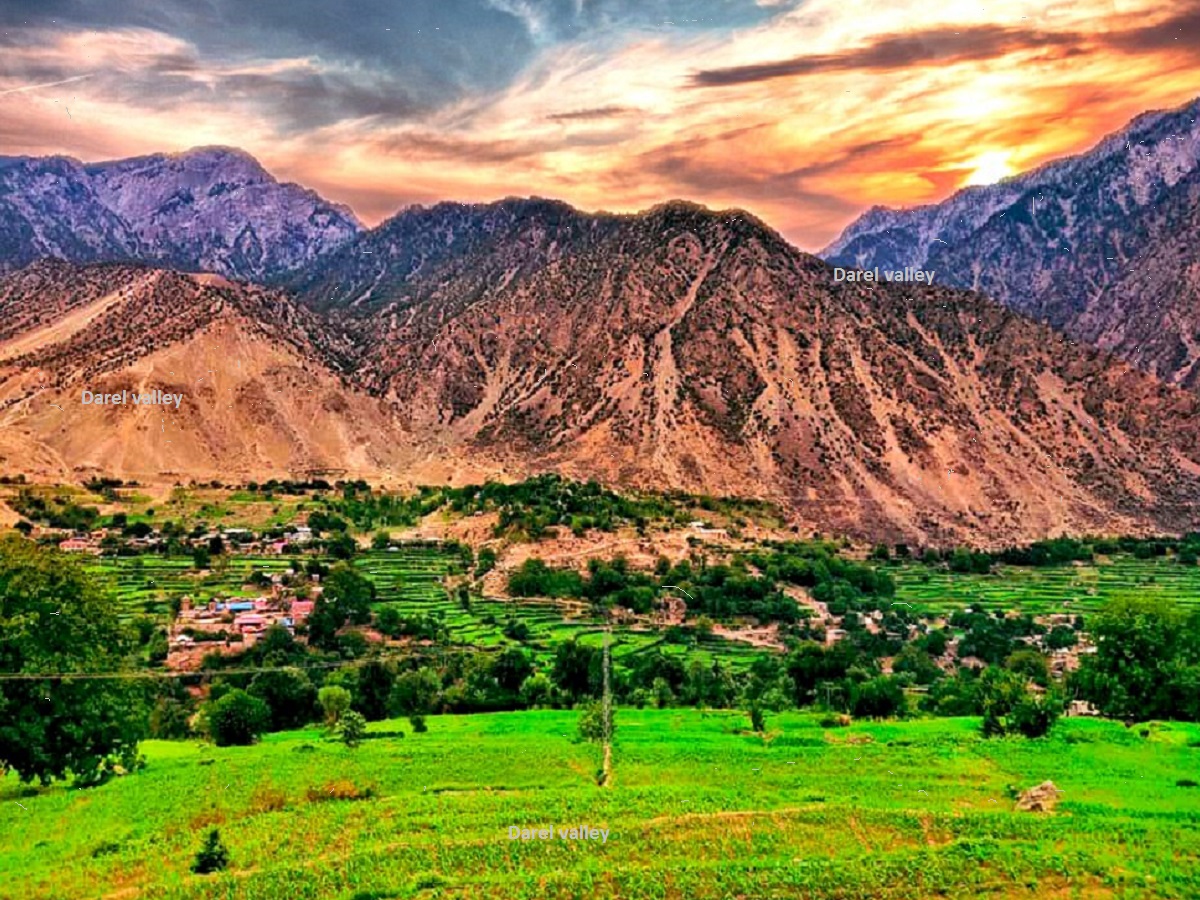
Pakistan’s Gilgit-Baltistan region is a treasure trove of captivating destinations, each offering a unique blend of adventure, culture, and breathtaking scenery. Darel Valley stands out as a hidden gem, waiting to be discovered by intrepid travelers seeking an off-the-beaten-path adventure. Imagine a land where emerald valleys carve their way through rugged mountains, roaring rivers snake through fertile plains, and ancient watchtowers stand sentinel, whispering tales of a bygone era. Darel Valley promises an unforgettable journey for those yearning for a glimpse into a world untouched by time.
The name “Darel” itself translates to “gateway” in the local language, hinting at the valley’s strategic location. Nestled amidst the towering peaks of the Hindu Kush range, Darel Valley serves as a passageway between different regions of Gilgit-Baltistan. For nature lovers, Darel Valley is a paradise. Lush green meadows dotted with vibrant wildflowers unfold beneath a cerulean sky. The Darel River, a lifeline for the valley, carves its path through the landscape, offering opportunities for white-water rafting or simply a place to relax amidst the symphony of nature.
Beyond its mesmerizing scenery, Darel Valley boasts a rich tapestry of cultures waiting to be explored. Timeworn villages, built from local stone and wood, cling to the mountainsides, each a testament to the region’s unique history. The local people, known for their warm hospitality and vibrant attire, speak a blend of languages like Shina and Kohistani, adding another layer of intrigue to the experience. Immerse yourself in their way of life, learn a few basic phrases to enhance interactions, and witness traditional crafts like rug-making and wood carving.
Darel Valley offers a taste of adventure for those seeking a step beyond the ordinary. Hike through dramatic landscapes, encountering cascading waterfalls and hidden glaciers. Embark on challenging treks that test your physical limits while rewarding you with breathtaking panoramic views. For a more cultural experience, explore ancient forts and shrines scattered throughout the region, offering a glimpse into the valley’s rich past.
Whether you’re a nature enthusiast yearning for breathtaking vistas, an adventurer craving a taste of the unknown, or a culture buff intrigued by unique traditions, Darel Valley promises an unforgettable journey. So, pack your bags, embrace the spirit of exploration, and get ready to be captivated by the untamed beauty of Darel Valley.
Read More About Darel valley
Tangir valley
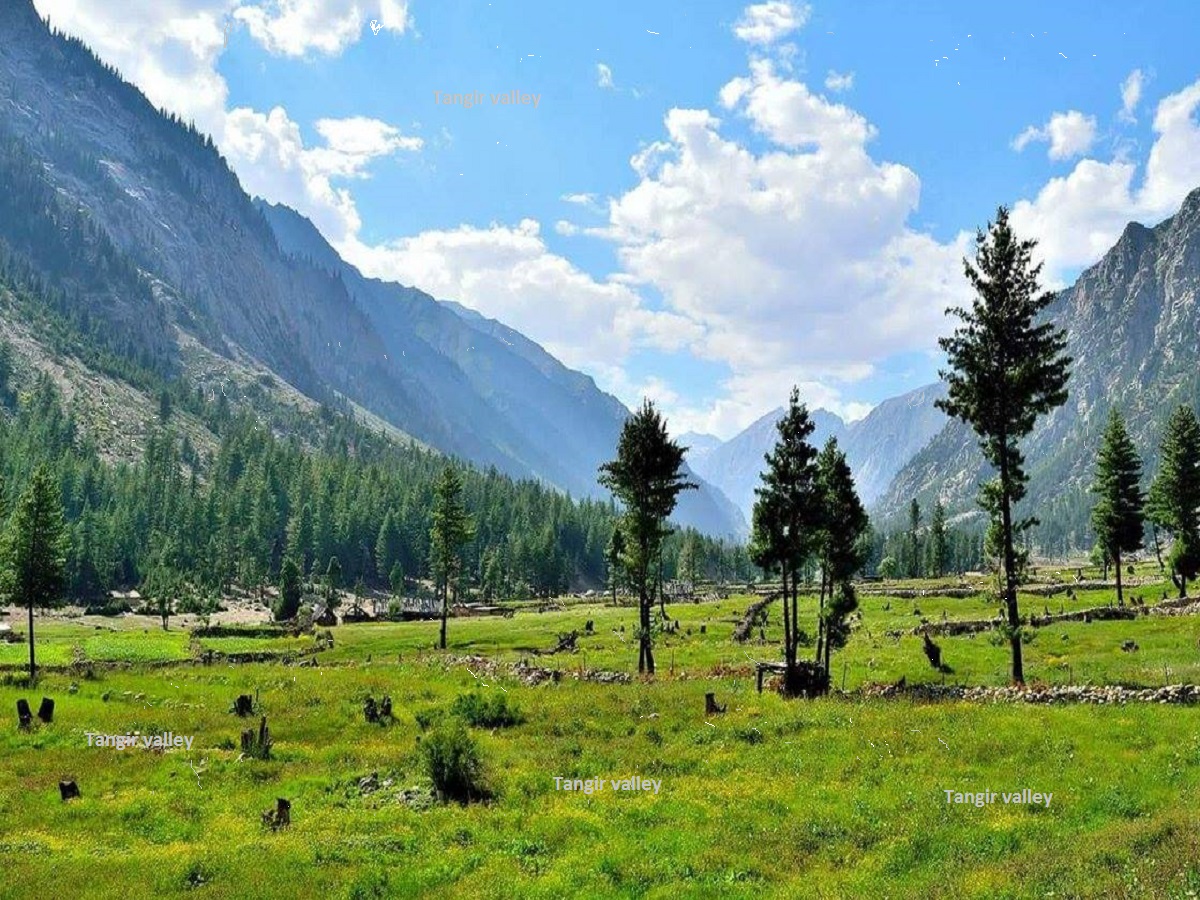
Pakistan’s Gilgit-Baltistan region harbors a captivating secret: Tangir Valley, a hidden paradise nestled amidst the majestic peaks of the Hindu Kush. Imagine a land untouched by the modern world, where emerald valleys unfold like a verdant carpet, crystal-clear rivers meander through the landscape, and ancient villages cling to mountain slopes, their traditions passed down through generations. Tangir Valley promises an escape for those seeking tranquility, breathtaking beauty, and a glimpse into a way of life far removed from the everyday hustle.
The name “Tangir” itself translates to “narrow” in the local Wakhi language, aptly describing the valley’s entrance – a dramatic gorge carved by the Indus River. Once inside, however, Tangir Valley opens up into a haven of serene beauty. Vast expanses of emerald green meadows, carpeted with vibrant wildflowers in spring, stretch as far as the eye can see. Towering mountains, snow-capped and majestic, form a dramatic backdrop, creating a sense of awe-inspiring grandeur. The crystal-clear Tangir River, a lifeline for the valley, snakes its way through the landscape, offering opportunities for peaceful kayaking adventures or simply a place to relax and listen to the gentle murmur of the water.
Tangir Valley boasts a rich cultural heritage waiting to be explored. Small, timeworn villages, built from local stone and wood, dot the valley floor. The local Wakhi people, known for their warm hospitality and traditional way of life, will welcome you with open arms. Immerse yourself in their culture, learn a few basic greetings in their native tongue, and witness traditional crafts like rug weaving and yak hair shawls being meticulously crafted. These practices, passed down through generations, offer a window into the heart and soul of the Tangir Valley community.
Unlike some of its more adventurous counterparts in Gilgit-Baltistan, Tangir Valley caters to those seeking a more peaceful escape. Hike through the captivating meadows, keeping an eye out for elusive wildlife like marmots or golden eagles soaring overhead. Enjoy a picnic lunch by the river, surrounded by the breathtaking scenery. Alternatively, explore the local villages and engage with the residents, learning about their way of life and unique traditions. Tangir Valley offers a digital detox, a chance to disconnect from the outside world and reconnect with nature and local culture.
Whether you’re a nature lover yearning for a serene escape, a culture buff intrigued by ancient traditions, or simply someone seeking a digital detox and a chance to unwind, Tangir Valley promises an unforgettable experience. So, pack your bags, embrace the spirit of tranquility, and get ready to be captivated by the enchanting seclusion of Tangir Valley.
Read More About Tangir valley
Astore Valley
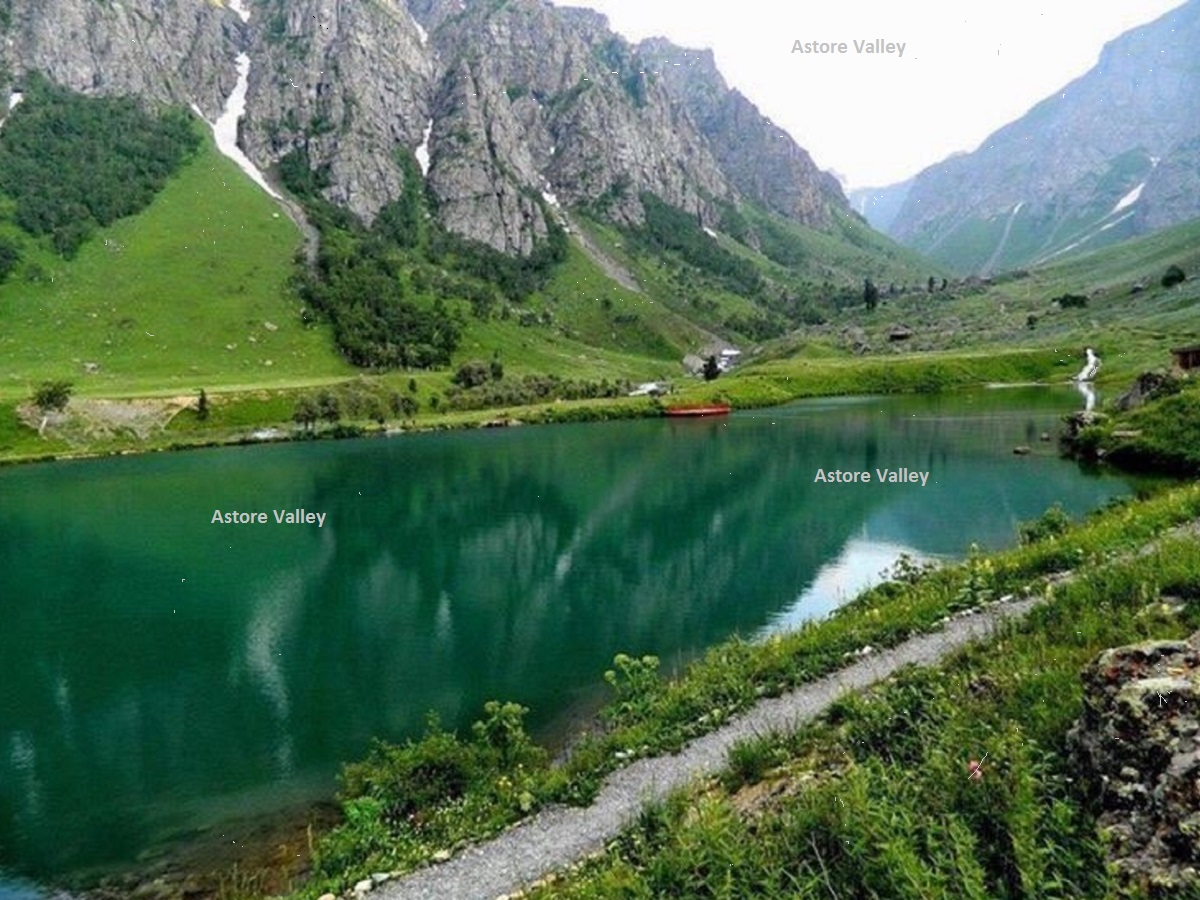
Carved by the Indus River and nestled amidst the colossal peaks of the Karakoram range lies Astore Valley, a captivating gem in Pakistan’s Gilgit-Baltistan region. Imagine a valley adorned with vibrant meadows, a majestic river snaking its way through the landscape, and charming villages clinging to mountainsides, their past whispering through the ages. Astore Valley offers a unique blend of breathtaking scenery, thrilling adventure opportunities, and a chance to experience the rich cultural heritage of the region, making it an ideal destination for travelers with diverse interests.
The name “Astore” itself translates to “falcon’s nest” in the local Balti language, hinting at the region’s soaring beauty. Lush green meadows, bursting with wildflowers in spring, create a vibrant tapestry against the backdrop of snow-capped peaks. The mighty Indus River, a lifeline for the valley, carves its path through the dramatic landscape, offering opportunities for white-water rafting or simply a place to relax and soak in the stunning scenery.
Beyond its mesmerizing beauty, Astore Valley boasts a captivating history waiting to be explored. Ancient watchtowers, remnants of a bygone era, stand sentinel on hilltops, whispering tales of battles and conquests. Timeworn villages, built from local stone and wood, offer a glimpse into the region’s rich cultural heritage. The local people, known for their warm hospitality and vibrant attire, speak a blend of languages like Shina and Balti, adding another layer of intrigue to the experience.
Astore Valley caters to both the thrill-seeker and the tranquility seeker. For adventure enthusiasts, the valley offers a plethora of challenging treks, including the iconic route to Deosai Plains, a high-altitude plateau dubbed the “Roof of the World.” Hikers can conquer dramatic mountain passes, witness cascading waterfalls, and experience the thrill of exploring remote glaciers. For those seeking a more relaxed pace, the valley offers opportunities for leisurely walks through meadows, horseback riding adventures, or simply enjoying a cup of local chai (tea) while soaking in the serene beauty.
Whether you’re a nature lover yearning for breathtaking vistas, an adventurer craving a taste of the unknown, or a culture buff intrigued by ancient traditions, Astore Valley promises an unforgettable journey. So, pack your bags, embrace the spirit of exploration, and get ready to be captivated by the picturesque tapestry of Astore Valley.
Read More About Astore Valley
Shigar Valley
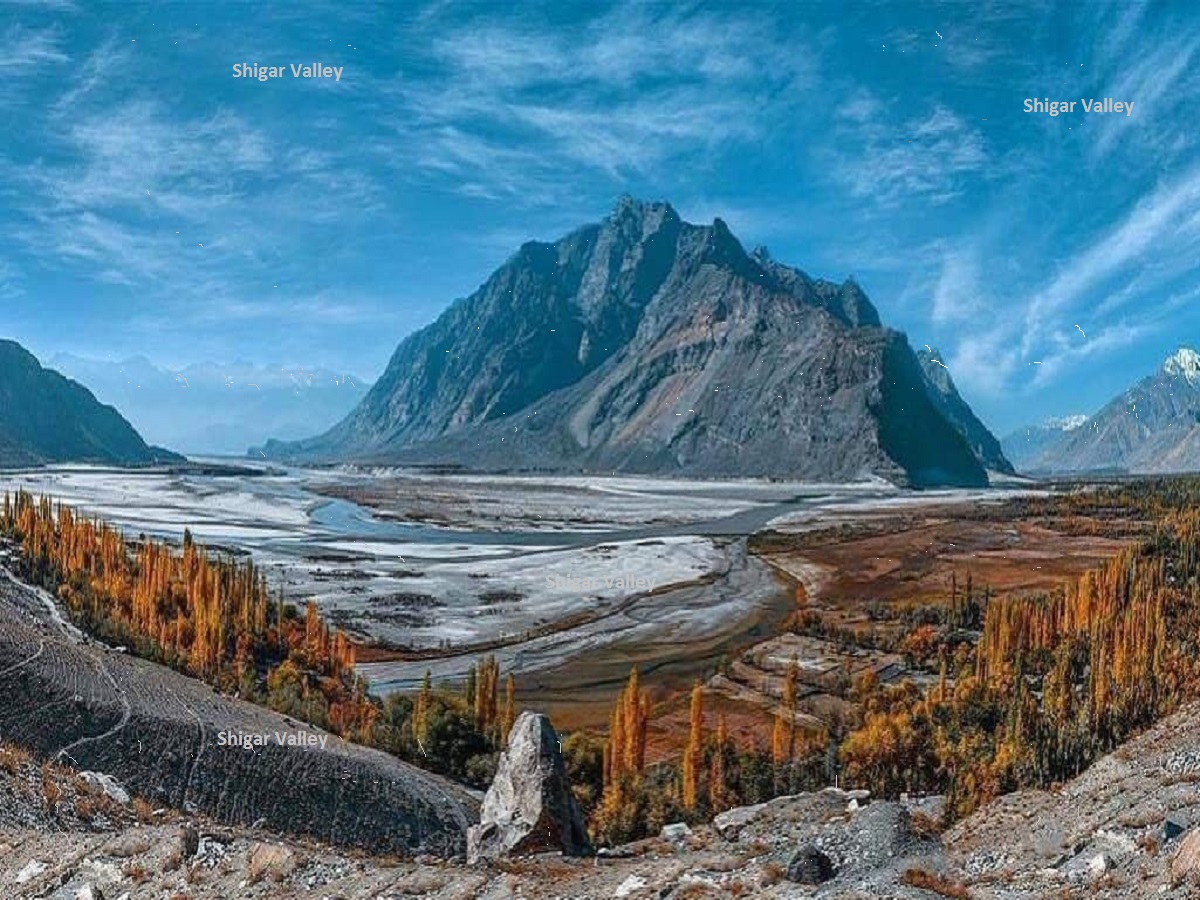
Imagine a valley nestled amidst the colossal peaks of the Karakoram, where fertile fields unfurl like a verdant carpet, ancient forts stand sentinel, and the legendary K2 beckons in the distance. This captivating haven is Shigar Valley, a captivating destination in Pakistan’s Gilgit-Baltistan region, offering a unique blend of adventure, cultural immersion, and historical intrigue.
Shigar Valley, meaning “sugar” in the local Balti language, is a testament to its rich agricultural heritage. Crystal-clear glacial streams nourish the land, allowing for the cultivation of apricots, cherries, and apples that add a touch of sweetness to the region. Beyond its fertile fields, Shigar Valley boasts breathtaking scenery. Towering mountains pierce the sky, their snow-capped peaks glistening under the sun. The Shigar River, a lifeblood for the valley, carves its path through the landscape, offering opportunities for peaceful kayaking adventures or simply a place to soak in the majestic beauty.
Shigar Valley isn’t just about breathtaking scenery; it’s a place where history whispers from ancient structures. Explore the imposing Shigar Fort, a 17th-century marvel that has been transformed into a luxurious hotel. Wander through its intricate carvings and courtyards, and imagine the lives of those who once resided within its walls. Delve deeper into the region’s rich heritage by visiting the Amburiq Mosque, a stunning example of Islamic architecture that has stood for centuries.
Shigar Valley serves as a gateway to some of Gilgit-Baltistan’s most iconic adventures. For seasoned trekkers, the mighty K2, the world’s second-highest peak, beckons with its challenging slopes. Hikers of all levels can explore the scenic trails leading to glaciers and hidden valleys. Shigar Valley also offers a chance to experience the thrill of white-water rafting on the Indus River, a heart-pounding adventure for those seeking an adrenaline rush.
Beyond the adventure and historical attractions, Shigar Valley pulsates with the warmth of Balti culture. The local people, known for their hospitality and vibrant attire, will welcome you with open arms. Learn a few basic phrases in Balti to enhance your interactions and witness traditional crafts like carpet weaving and wood carving, each showcasing the artistic heritage of the region. In the evenings, savor a delicious meal of local cuisine, often featuring fresh fruits grown in the valley, and connect with the locals over a cup of traditional chai (tea).
Whether you’re a seasoned adventurer seeking a challenging trek, a history buff intrigued by ancient wonders, or simply someone yearning for a taste of local culture, Shigar Valley promises an unforgettable journey. So, pack your bags, embrace the spirit of exploration, and get ready to be captivated by this gateway to adventure and heritage in Pakistan’s majestic north.
Read More About Shigar Valley
Naltar Valley
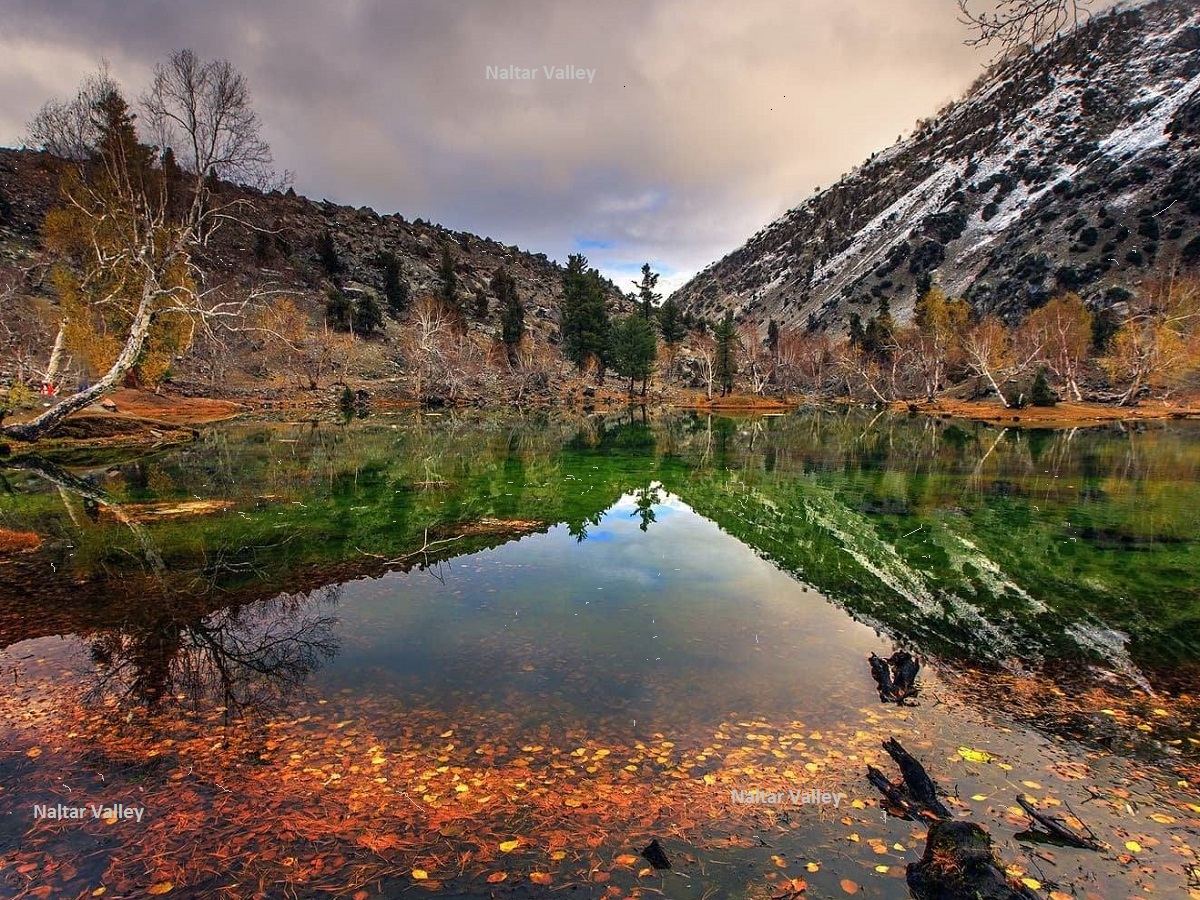
Imagine a haven nestled amidst the towering peaks of the Karakoram, where lush forests carpet the slopes, serene lakes shimmer like sapphires, and fresh mountain air invigorates your soul. This enchanting escape is Naltar Valley, a captivating gem in Pakistan’s Gilgit-Baltistan region. Naltar promises a unique blend of breathtaking scenery, exhilarating winter activities, and a chance to reconnect with nature, making it an ideal destination for all seasons.
The name “Naltar” itself translates to “valley of lakes” in the local Balti language, aptly describing one of the valley’s defining features. Crystal-clear lakes, known as the Bashkiri Lakes, dot the landscape, reflecting the snow-capped peaks and creating a picture-perfect panorama. Lush green forests, teeming with diverse birdlife, carpet the valley floor, offering a haven for nature enthusiasts. Towering mountains stand guard, their slopes offering opportunities for thrilling winter sports during colder months and breathtaking hikes during the summer.
Beyond its mesmerizing scenery, Naltar Valley boasts a tranquil atmosphere that invites relaxation and rejuvenation. Escape the hustle and bustle of city life and immerse yourself in the serenity of the valley. Hike through the fragrant pine forests, keeping an eye out for elusive wildlife like marmots or ibex. Enjoy a picnic lunch by the shimmering lakes, surrounded by the symphony of nature. In the evenings, cozy up by a crackling bonfire under a star-studded sky, a perfect opportunity to reconnect with yourself and loved ones.
Naltar Valley transforms into a winter wonderland during the colder months. Fresh powder snow blankets the slopes, attracting skiers and snowboarders from across the globe. Glide down exhilarating slopes, experiencing the thrill of winter sports amidst breathtaking scenery. For those seeking a more relaxed pace, Naltar offers opportunities for snowshoeing through the pristine snowfields, a peaceful way to explore the winter landscape.
Whether you’re a nature lover yearning for a serene escape, an adventurer seeking winter thrills, or simply someone yearning for a break from the everyday, Naltar Valley promises an unforgettable experience. So, pack your bags, embrace the spirit of adventure, and get ready to be captivated by the fairytale escape that awaits in Naltar Valley.
Read More About Naltar Valley
Ghizar Valley
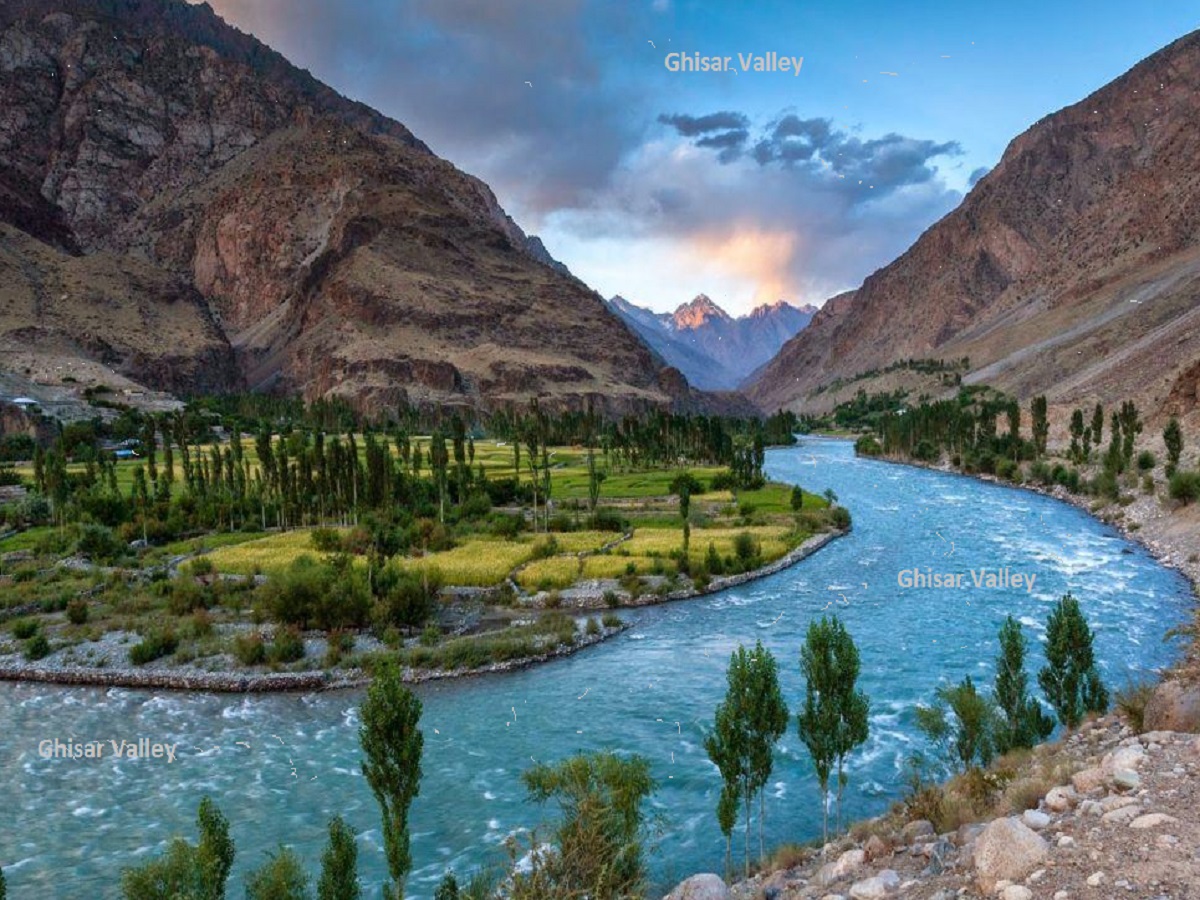
Nestled amidst the majestic peaks of the Karakoram mountain range in Pakistan lies the enchanting Ghizar Valley, also known as Upper Kachura Lake. This heart-shaped valley cradled by snow-capped mountains offers a captivating blend of serene beauty, cultural experiences, and a chance to unwind in a breathtaking natural setting.
The name “Ghizar” itself doesn’t have a definitive origin, but some believe it might be derived from a local term meaning “glacier” or “snowfield,” reflecting the valley’s characteristic features. This valley, brimming with natural beauty, promises a unique experience for nature lovers, adventure seekers, and those seeking a tranquil escape.
Beyond its captivating scenery, Ghizar Valley boasts a rich cultural heritage. The local Balti people, renowned for their warm hospitality and vibrant attire, call this valley home. Immerse yourself in their culture, learn a few basic greetings in Balti, and witness their way of life that thrives in harmony with the surrounding mountains. Imagine families enjoying a picnic lunch by the serene lake, their laughter echoing through the valley, or local vendors selling traditional handicrafts, each item imbued with the cultural essence of the region.
Ghizar Valley caters to both relaxation and exploration. Indulge in leisurely walks along the scenic pathways bordering the lake, breathing in the crisp mountain air and soaking in the tranquility of the surroundings. For a unique perspective, rent a paddleboat and explore the turquoise waters of the lake, a perfect opportunity to witness the valley’s beauty from a different vantage point.
The valley also serves as a gateway to further adventure in Skardu. Embark on a jeep safari to explore the vast expanse of Shangri-La (Lower Kachura) Lake, a larger counterpart to the Ghisar Valley lake, renowned for its dramatic scenery. For history buffs, Skardu Fort, a centuries-old marvel perched on a hilltop, offers a glimpse into the region’s rich past. Adventure seekers can venture further into the Karakoram mountains, challenging themselves with trekking expeditions that reward them with breathtaking panoramic vistas and a sense of accomplishment.
Whether you’re a nature enthusiast yearning for a tranquil escape, a culture enthusiast seeking a glimpse into the lives of the Balti people, or simply someone seeking a break from the ordinary, Ghisar Valley promises an unforgettable experience. So, pack your bags, embrace the spirit of serenity, and get ready to be captivated by this jewel in Skardu’s crown.
Read More About Ghizar Valley
Hispar Valley
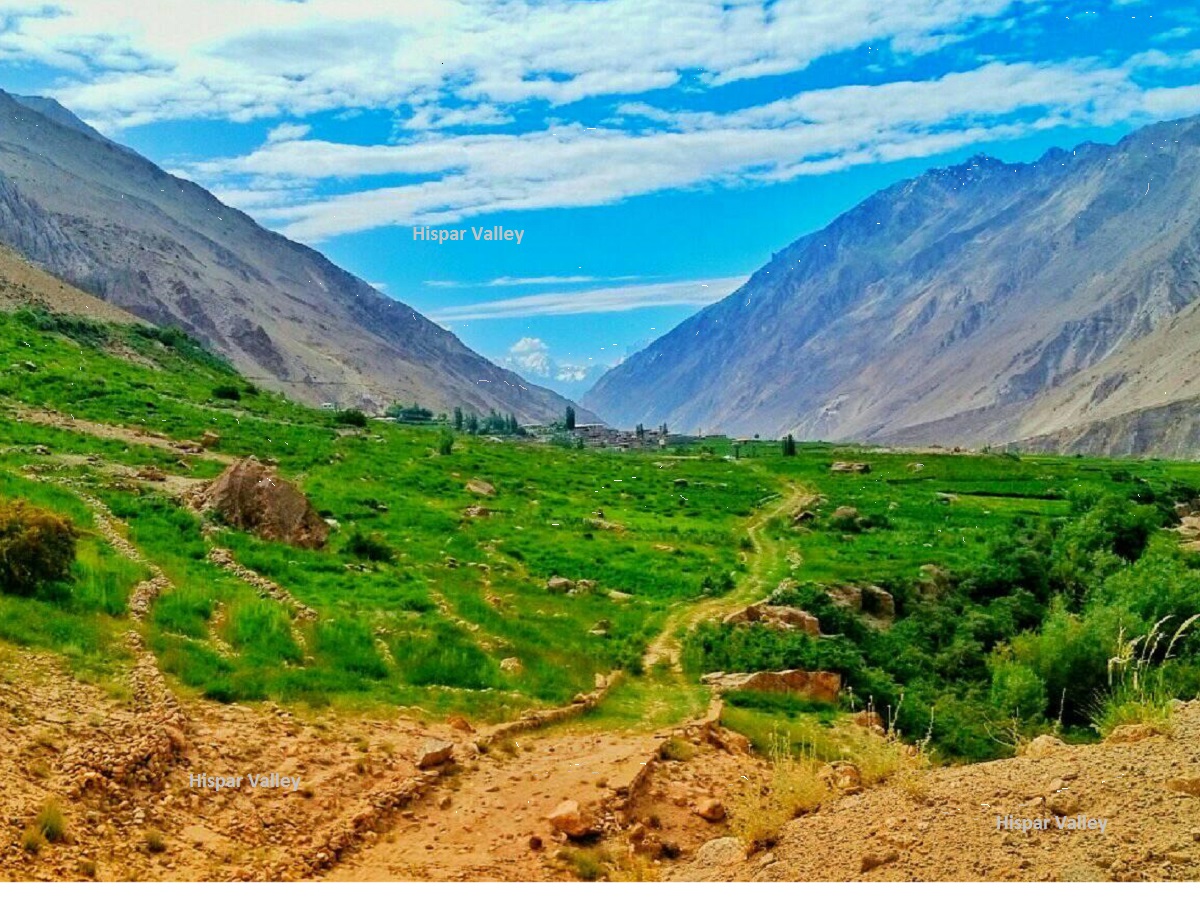
Nestled amidst the colossal peaks of the Karakoram mountain range in Pakistan’s Gilgit-Baltistan region, Hispar Valley isn’t just another valley. It’s a trekker’s paradise, a gateway to awe-inspiring glaciers, and a place where adventure unfolds with every step. Here, towering mountains adorned with glaciers like the Hispar Glacier create a dramatic scene, promising an unforgettable experience for nature enthusiasts and adventure seekers.
The name “Hispar” itself holds a hint of the valley’s character. While the exact origin remains unclear, some believe it translates to “ice” in the Balti language, reflecting the valley’s defining feature – the majestic Hispar Glacier, one of the longest glaciers outside the polar regions. This 49-kilometer (30-mile) behemoth snakes through the valley, carving its path through rugged mountains and leaving behind a landscape of breathtaking beauty.
Beyond the glaciers, Hispar Valley boasts a captivating display of nature’s grandeur. Towering snow-capped peaks, including the formidable peaks surrounding the Hispar La, dominate the skyline. Rugged mountainsides carved by glacial activity create a dramatic backdrop for the turquoise waters of glacial lakes that dot the valley floor. This diverse landscape offers endless opportunities for exploration and photography, capturing the raw power and breathtaking beauty of the Karakoram.
The history of Hispar Valley is intertwined with the golden age of Himalayan exploration. Early explorers were captivated by the valley’s beauty and the challenge posed by its formidable terrain and glaciers. Today, the Hispar Valley trek remains a popular choice for experienced trekkers seeking a challenging yet rewarding adventure. This multi-day trek offers stunning views of the surrounding mountains, a glimpse into the lives of the Wakhi people who inhabit the region, and the chance to witness the Hispar Glacier firsthand.
While reaching the summit of the surrounding peaks might be reserved for elite mountaineers, Hispar Valley offers a unique experience for all levels of adventurers. Less strenuous hikes within the valley cater to those seeking a more relaxed pace, allowing them to soak in the scenery and appreciate the tranquility of the natural world. Camping beneath a star-studded sky, surrounded by towering peaks and the sound of glacial streams, offers an unforgettable experience for nature lovers.
The Hispar Valley isn’t just a destination; it’s a journey – a journey of discovery, challenge, and awe-inspiring beauty. So, lace up your hiking boots, embrace the spirit of adventure, and prepare to be captivated by this trekker’s paradise in the heart of the Karakoram.
Read More About Hispar Valley
Fairy Meadows
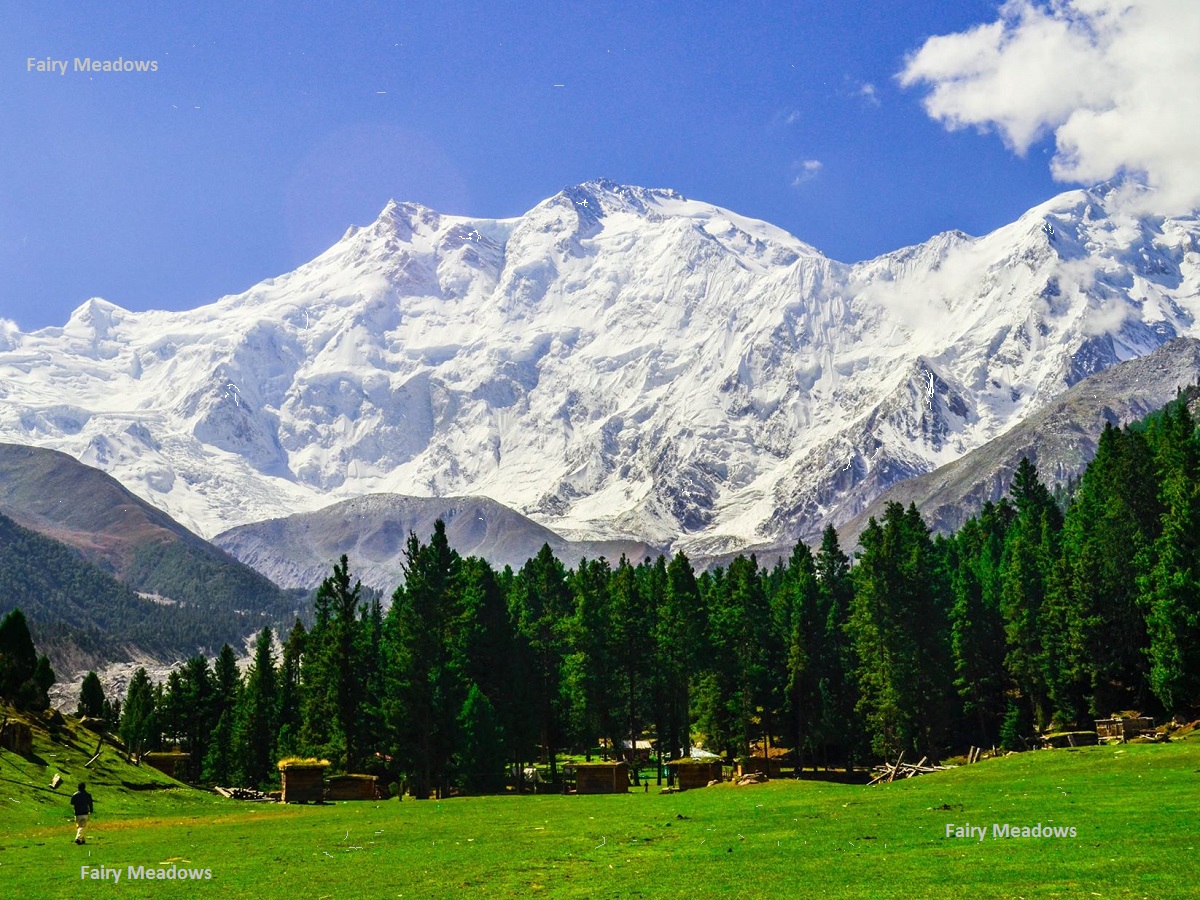
Nestled amidst the colossal peaks of the Karakoram range in Pakistan lies Fairy Meadows, a destination that lives up to its name. This enchanting plateau, carpeted with lush green meadows and framed by snow-capped giants, offers a captivating blend of breathtaking scenery, adventure opportunities, and a chance to reconnect with nature. At an altitude of about 3,300 meters (10,826 feet), Fairy Meadows serves as the launching point for expeditions to Nanga Parbat, the world’s ninth-highest peak, but its allure extends far beyond mountaineering.
The origin of the name “Fairy Meadows” is attributed to German climbers who were captivated by the area’s ethereal beauty. Locally, it’s known as Joot, meaning “bridge” in Urdu, possibly referencing the natural bridge formed by a tributary of the Indus River that leads to the meadows. Regardless of the name, one thing is certain: Fairy Meadows offers a picture-perfect escape for all types of travelers.
Beyond its idyllic beauty, Fairy Meadows boasts a rich tapestry of landscapes. The vast, grassy meadows are dotted with wildflowers in the summer, creating a scene straight out of a fairytale. Dense pine forests skirt the periphery, offering shade and a habitat for diverse birdlife. Glacial streams carve their paths through the valley, eventually feeding into the mighty Indus River that snakes through the valleys below. Towering over this captivating scene is the majestic Nanga Parbat, also known as the “Killer Mountain,” its peak often shrouded in mist, adding an air of mystery to the landscape.
The history of Fairy Meadows is intertwined with the golden age of Himalayan exploration. While the area has likely been known to local communities for centuries, it gained international recognition in the mid-20th century as a base camp for expeditions to Nanga Parbat. Today, Fairy Meadows remains a popular destination for mountaineers, but it also caters to a broader range of visitors. Hikers can embark on challenging journeys to explore the surrounding valleys and glaciers, while nature enthusiasts can simply relax in the meadows, soak in the fresh mountain air, and appreciate the tranquility of the Himalayas.
For those seeking a cultural immersion, nearby villages offer a glimpse into the traditional way of life of the local people. Experience their warm hospitality, learn a few basic greetings in Urdu, and witness their unique customs that have thrived in harmony with the surrounding mountains for generations.
Whether you’re an aspiring mountaineer, a nature lover seeking breathtaking vistas, or simply someone yearning for a tranquil escape, Fairy Meadows promises an unforgettable experience. So, pack your bags, embrace the spirit of adventure, and prepare to be enchanted by this dreamy haven in the heart of the Himalayas.
Read More About Fairy Meadows
Deosai National Park
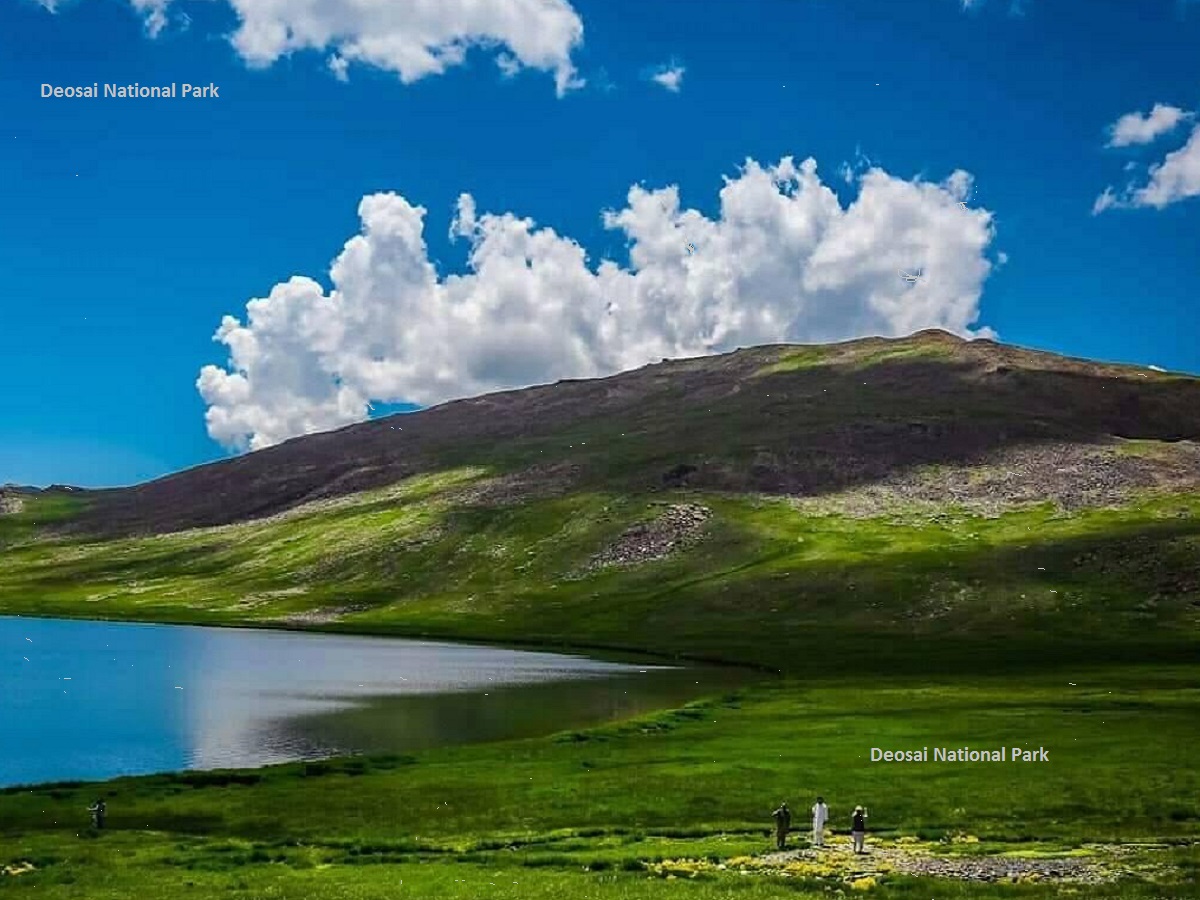
High in Pakistan’s Gilgit-Baltistan region, where the Western Himalayas meet the Karakoram, lies Deosai National Park – a land unlike any other. Nicknamed the “Roof of the World” for its soaring average elevation of over 4,100 meters (13,450 feet), Deosai isn’t just a vast plateau; it’s a tapestry woven with vibrant wildflowers, diverse wildlife, and a sense of serenity that washes over every visitor. Here, amidst the rolling plains and snow-capped peaks, nature unfolds in a breathtaking display, offering a unique experience for nature enthusiasts, adventure seekers, and anyone yearning for a tranquil escape.
The name “Deosai” itself holds a hint of the park’s character. Derived from the Balti words “Deo” meaning giant and “Sai” meaning shadow, it translates to “Land of the Giants.” While the giants might be metaphorical, referring to the colossal mountains that surround the plateau, the name also reflects the park’s vastness and its ability to leave visitors feeling dwarfed by its beauty.
Deosai National Park boasts a landscape unlike any other in Pakistan. Unlike the typical mountainous terrain of the region, Deosai is a high-altitude plateau characterized by rolling plains, gently sloping hills, and crystal-clear glacial lakes. This unique topography creates a haven for a diverse array of wildflowers. In the spring and summer months, the plains erupt in a vibrant display of color, with wildflowers carpeting the landscape in a kaleidoscope of hues. Imagine vast meadows painted with poppies, irises, gentians, and countless other species, creating a scene straight out of a fairytale.
Beyond its floral beauty, Deosai National Park is a haven for wildlife. The critically endangered Himalayan Brown Bear calls this plateau home, along with other mammals like marmots, golden eagles, and lammergeyers. Spotting these elusive creatures adds another layer of excitement to exploring the park. Deosai and Sheosar Lake, located within the park’s boundaries, form one of the highest elevation freshwater wetlands in the world, further emphasizing the park’s ecological significance.
The history of Deosai National Park is one of conservation. Recognizing the unique ecosystem and beauty of the plateau, Pakistani authorities declared it a National Park in 1993. Today, Deosai serves as a protected area for its diverse flora and fauna, ensuring its natural splendor is preserved for generations to come.
While exploring Deosai’s vastness on foot might be challenging due to its high altitude, jeep safaris and guided tours offer a safe and accessible way to experience its beauty. For those seeking a more immersive experience, camping options within the park allow visitors to spend the night under a star-filled sky, surrounded by the park’s tranquility.
Deosai National Park isn’t just a park; it’s an experience – an experience of breathtaking landscapes, diverse wildlife encounters, and a chance to reconnect with nature at its most pristine. So, pack your bags, embrace the spirit of adventure, and prepare to be captivated by this “Land of the Giants” on the Roof of the World.
Read More About Deosai National Park
Lakes
Shangrila Lake (Upper Kachura Lake)
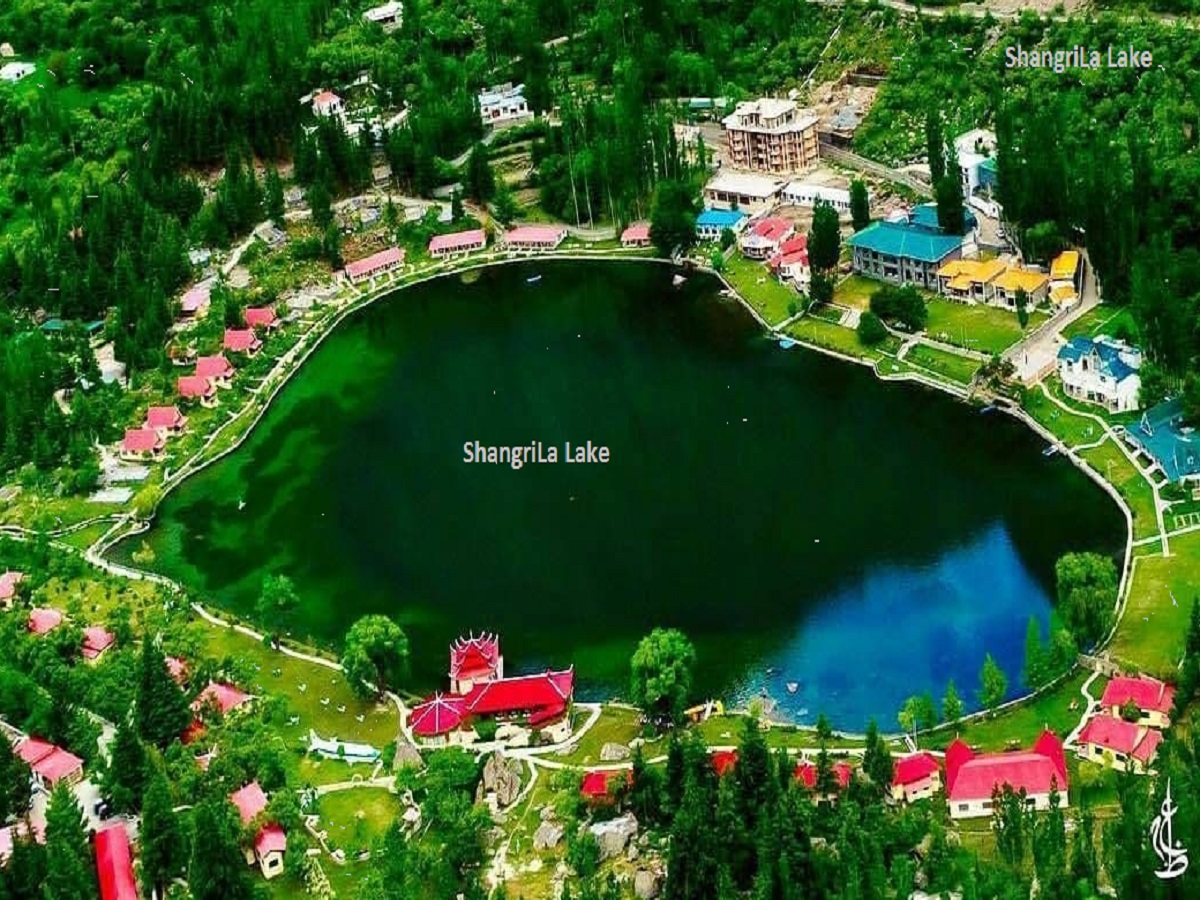
Imagine a heart-shaped lake nestled amidst the majestic peaks of the Karakoram, its turquoise waters reflecting the snow-capped mountains. Lush orchards and vibrant flower gardens line its shores, offering a tranquil escape. This captivating haven is Shangri-La Lake, also known as Upper Kachura Lake, a jewel in Skardu’s crown, Pakistan. Shangri-La Lake promises a unique blend of serene beauty, cultural experiences, and a chance to unwind amidst breathtaking scenery.
The name “Shangri-La” evokes a mythical paradise, and this lake truly embodies that essence. The heart-shaped form adds a touch of romance, while the turquoise waters shimmer under the sun, creating a picture-perfect postcard scene. Lush green orchards, laden with fruits like apricots and apples, line the shores, adding a vibrant touch to the landscape. For those seeking a touch of history, the lake boasts a connection to the Shangri-La Resort, a legacy of hospitality offering stunning views of the surrounding beauty.
Beyond its captivating scenery, Shangri-La Lake offers a glimpse into the vibrant culture of Skardu. The local Balti people, known for their warm hospitality and colorful attire, often utilize the lake for recreational activities. Witness locals enjoying a leisurely boat ride on the calm waters or families picnicking under the shade of fruit trees. Immerse yourself in the local culture, learn a few basic greetings in Balti, and experience the simple joys of life by the lake.
Shangri-La Lake caters to both relaxation and gentle exploration. Take a leisurely stroll along the walking paths bordering the lake, inhaling the fresh mountain air and soaking in the serene ambiance. For a unique perspective, rent a paddleboat and explore the lake from a different vantage point. Alternatively, explore the surrounding orchards, learning about local fruits and interacting with friendly vendors.
The lake serves as a gateway to further adventures in Skardu. Embark on a jeep safari to explore the majestic Shangri-La (Lower Kachura) Lake, a larger counterpart known for its scenic beauty. For history buffs, Skardu Fort, a centuries-old marvel perched on a hilltop, offers a glimpse into the region’s rich past. Adventure seekers can venture further into the Karakoram mountains, embarking on challenging treks that reward them with breathtaking panoramic views.
Whether you’re a nature lover yearning for a tranquil escape, a culture enthusiast seeking local experiences, or simply someone seeking a break from the ordinary, Shangri-La Lake promises an unforgettable experience. So, pack your bags, embrace the spirit of serenity, and get ready to be captivated by this jewel in Skardu’s crown.
Read More About Shangrila Lake
Attabad Lake
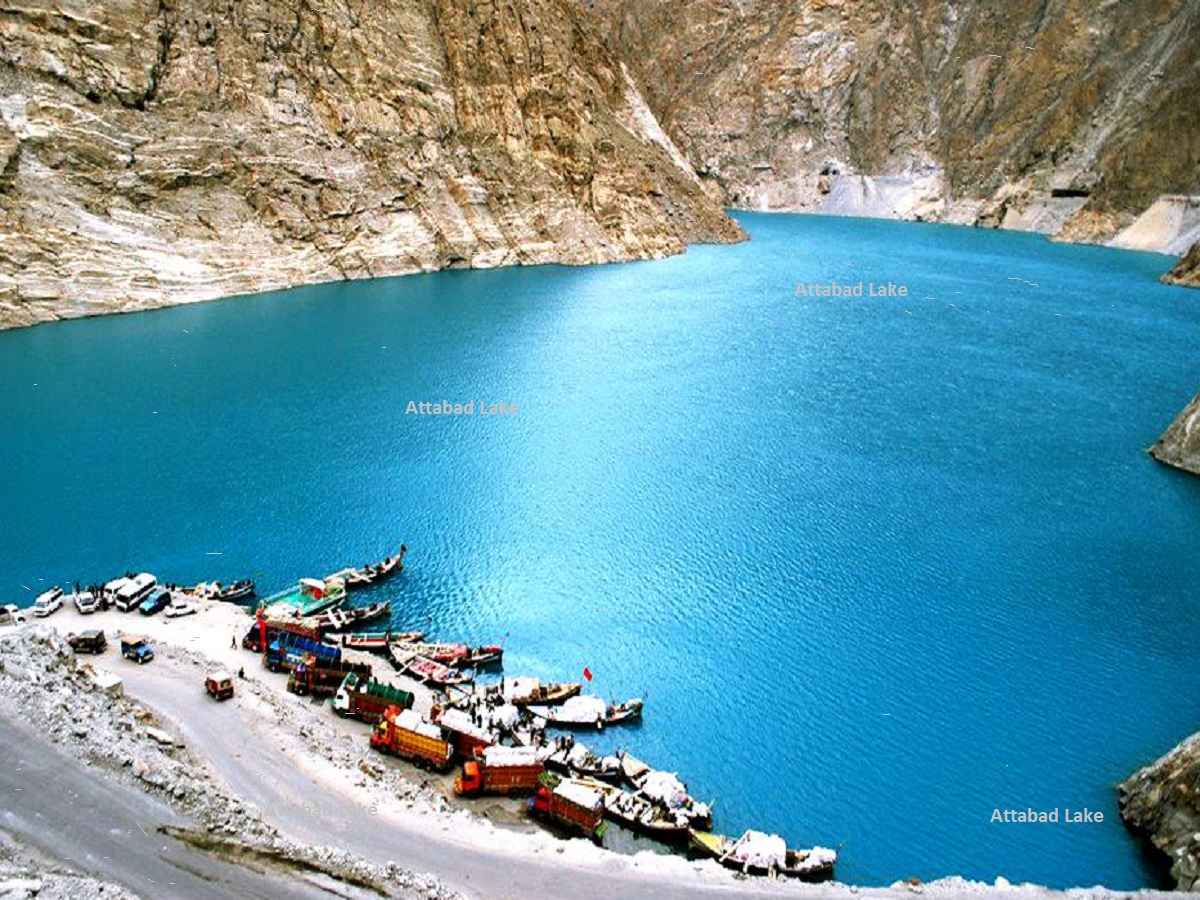
Nestled amidst the colossal peaks of the Gilgit-Baltistan region in Pakistan lies Attabad Lake, a captivating marvel born from a natural disaster. Imagine a turquoise gem snaking through a dramatic gorge, its vibrant waters reflecting the snow-capped mountains. This awe-inspiring sight is the legacy of a massive landslide, transformed into a serene lake that offers a unique blend of breathtaking beauty, adventure opportunities, and a glimpse into the resilience of the local community.
Attabad Lake, sometimes called Gojal Lake, emerged in 2010 after a landslide blocked the flow of the Hunza River. This dramatic event reshaped the landscape, creating a 14-kilometer-long lake with depths reaching over 100 meters. The vibrant turquoise color of the water, a result of glacial meltwater, contrasts beautifully with the rugged mountains surrounding it. For nature lovers, Attabad Lake is a paradise waiting to be explored.
Beyond its mesmerizing scenery, Attabad Lake offers a unique story of resilience. The landslide, while devastating, also paved the way for a new way of life for the local people. Villages that were once on the main highway now sit on the shores of the lake, accessible by boat. The local community, known for their warm hospitality, has adapted to their new surroundings, offering boat tours and other services to visitors. Immerse yourself in their culture, learn a few basic greetings in their native language (often Urdu or Wakhi), and hear firsthand stories of how they have thrived in the face of adversity.
Attabad Lake caters to both the thrill-seeker and the tranquility seeker. For adventure enthusiasts, the lake offers opportunities for kayaking or jet-skiing across its turquoise waters. Imagine the exhilarating rush as you navigate the calm waters, surrounded by breathtaking mountain scenery. For those seeking a more relaxed pace, a leisurely boat ride on the lake offers a chance to soak in the beauty and serenity of the surroundings. Keep your eyes peeled for local birds soaring overhead or perhaps even spot elusive wildlife like marmots on the rocky shores.
The lake also serves as a gateway to further exploration in Gilgit-Baltistan. Venture beyond the lake to explore the historic Karimabad, the heart of Hunza Valley, known for its ancient forts and breathtaking views. For those seeking a cultural immersion, nearby villages offer a glimpse into the traditional way of life of the Wakhi people. Hikers can embark on challenging treks in the surrounding mountains, rewarded with panoramic vistas and a sense of accomplishment.
Whether you’re a nature enthusiast yearning for breathtaking landscapes, an adventurer seeking a unique experience, or simply someone intrigued by a story of resilience, Attabad Lake promises an unforgettable journey. So, pack your bags, embrace the spirit of adventure, and get ready to be captivated by this awe-inspiring legacy of nature’s power.
Read More About Attabad Lake
Sheosar Lake
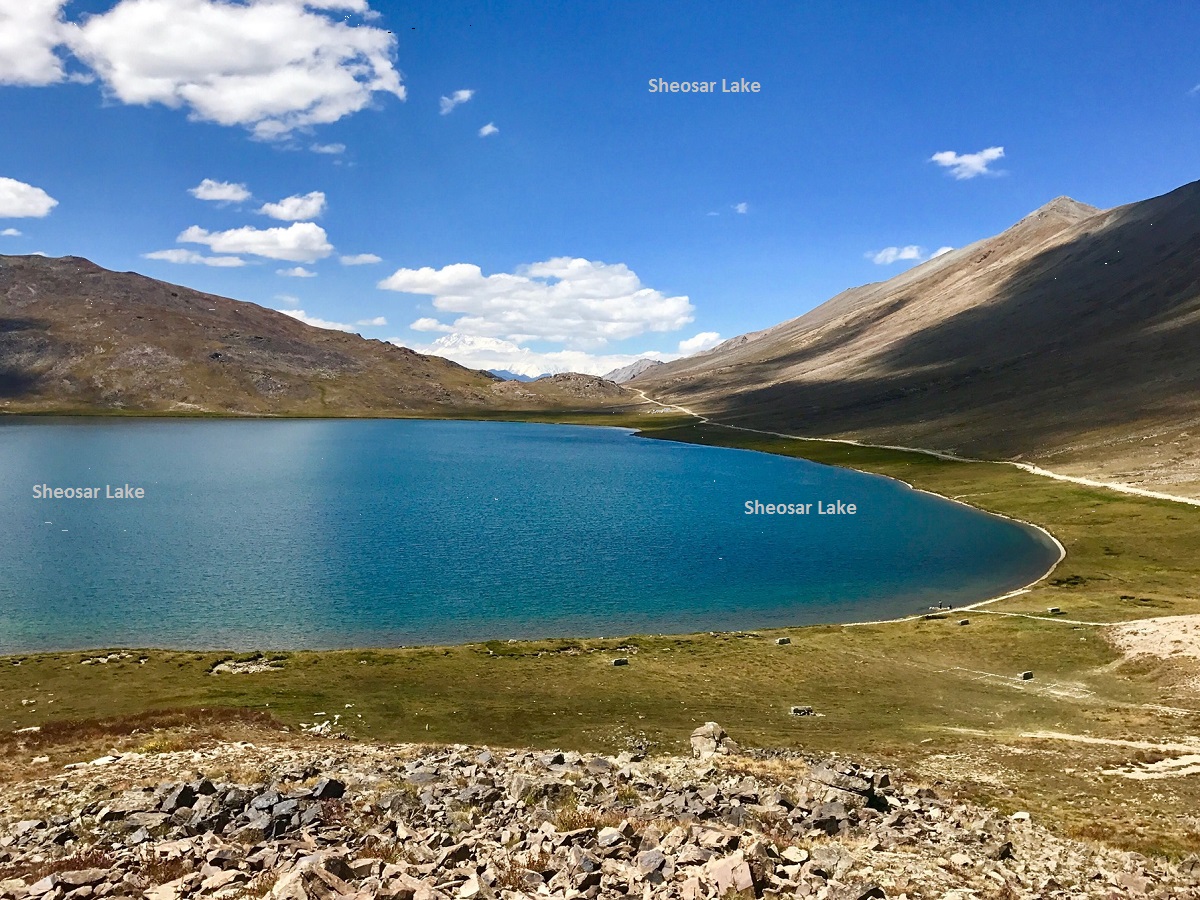
Imagine a hidden lake nestled amidst the “Roof of the World,” Pakistan’s Deosai National Park. Crystal-clear waters reflect the majestic peaks of the Himalayas, while vibrant wildflowers paint the surrounding meadows in a kaleidoscope of colors. This captivating haven is Sheosar Lake, a jewel waiting to be discovered by nature lovers and tranquility seekers. Sheosar Lake offers a unique blend of breathtaking alpine beauty, peaceful experiences, and a chance to reconnect with nature in its purest form.
The name “Sheosar” translates to “blind lake” in the Shina language, hinting at the lake’s limited accessibility from certain angles due to marshy shores. However, this doesn’t diminish its beauty. Sheosar Lake boasts a significant size, stretching over 2.3 kilometers in length and reaching depths of up to 40 meters. The turquoise waters shimmer under the sun, creating a picture-perfect postcard scene. Vivid wildflowers, blooming in spring and summer, add a vibrant touch to the surrounding emerald green meadows. Towering mountains, adorned with snow-capped peaks, stand guard, creating a sense of awe-inspiring majesty.
Beyond its captivating scenery, Sheosar Lake offers a serene escape for those seeking a break from the hustle and bustle of everyday life. The tranquil atmosphere invites relaxation and rejuvenation. Imagine waking up to the gentle chirping of birds and the crisp mountain air filling your lungs. Hike through the fragrant meadows, keeping an eye out for elusive wildlife like marmots or ibex. Enjoy a picnic lunch by the serene lake, surrounded by the symphony of nature. In the evenings, cozy up by a crackling bonfire under a star-studded sky, a perfect opportunity to reconnect with yourself and loved ones.
For those seeking a touch of adventure, Sheosar Lake serves as a base camp for exploring the wonders of Deosai National Park. Embark on challenging treks through the dramatic landscape, encountering cascading waterfalls and hidden valleys. For a more relaxed adventure, explore the park on horseback, a traditional way to traverse the high-altitude terrain. Deosai National Park is also a haven for birdwatchers, with a diverse range of avian species to spot.
The winters at Sheosar Lake transform the landscape into a wonderland. The lake remains frozen from November to May, offering a unique opportunity for winter sports enthusiasts. Imagine the thrill of snowshoeing across the pristine white expanse or trying your hand at ice skating on the frozen surface of the lake (always prioritize safety and ensure proper conditions).
Whether you’re a nature lover yearning for a tranquil escape, an adventurer seeking to explore the wonders of Deosai National Park, or simply someone seeking a break from the ordinary, Sheosar Lake promises an unforgettable experience. So, pack your bags, embrace the spirit of serenity, and get ready to be captivated by the jewel of Deosai.
Read More About Sheosar Lake
Rush Lake
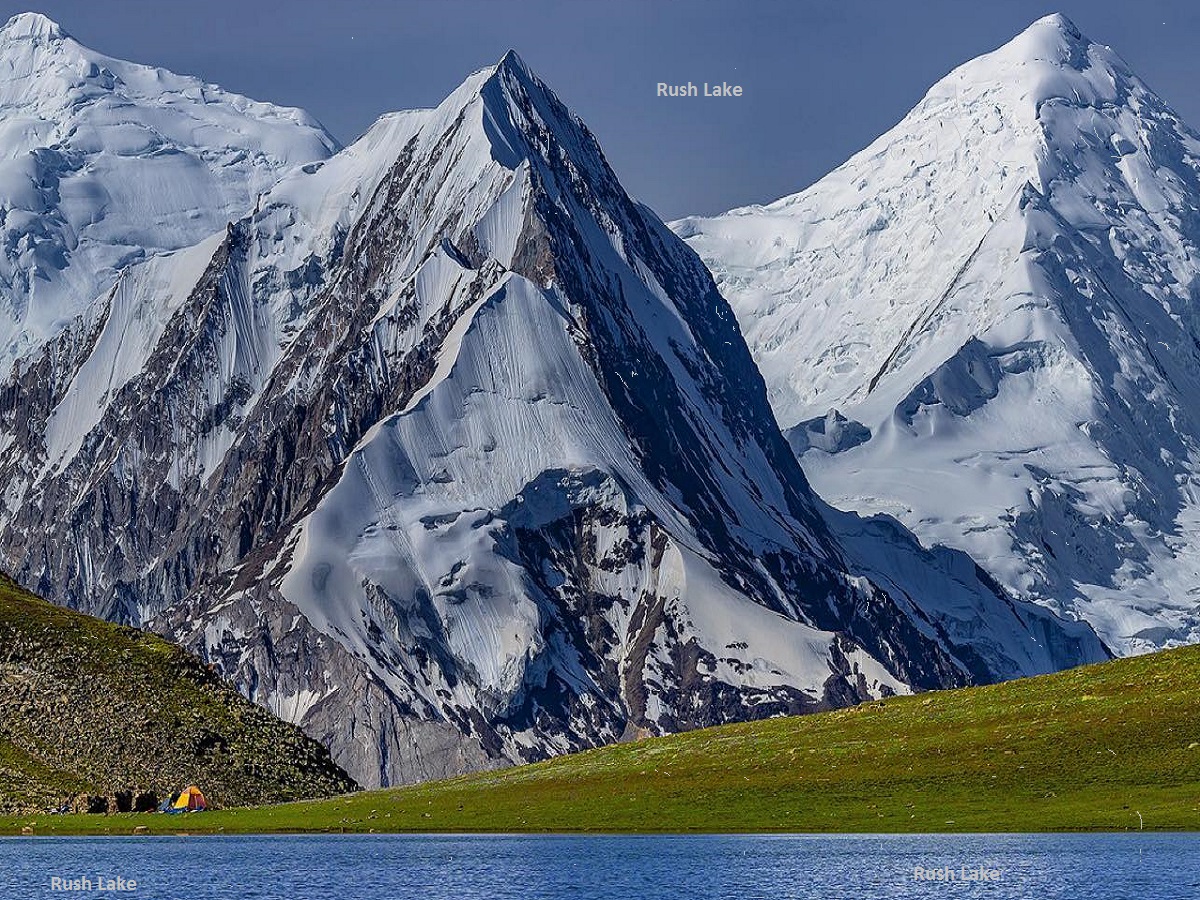
Nestled amidst the colossal peaks of the Nagar Valley in Pakistan’s Gilgit-Baltistan region, Rush Lake isn’t your average alpine lake. This high-altitude gem, often overshadowed by its more prominent neighbors, offers a captivating blend of breathtaking scenery, challenging hikes, and a glimpse into the lesser-explored corners of the Karakoram. At an elevation of approximately 4,694 meters (15,400 feet), Rush Lake promises a unique adventure for those seeking a path less traveled.
The name “Rush” doesn’t have a definitive origin in local languages. Some speculate it might be derived from a term related to a specific type of vegetation or a local geographical feature. Regardless of its meaning, the name evokes a sense of mystery and seclusion, fitting for a lake hidden amidst towering mountains.
Beyond its secluded location, Rush Lake boasts captivating beauty. The pristine turquoise waters, reflecting the surrounding snow-capped peaks, create a scene of breathtaking serenity. Wildflowers bloom on the surrounding meadows in the summer months, adding a splash of color to the stark landscape. Towering over the lake stands the majestic Rush Peak, its imposing presence adding a touch of drama to the scene.
The history of Rush Lake is intertwined with the exploration of the Karakoram. While the exact timeline of its discovery by outsiders remains unclear, it likely played a role in the lives of local communities for centuries. In recent decades, trekkers seeking a challenging yet rewarding adventure have begun to discover the lake’s beauty. The trek to Rush Lake offers stunning views of the surrounding peaks, including giants like Spantik (Golden Peak) and Miar Peak, and a chance to experience the raw power of the Karakoram.
While reaching the summit of the surrounding peaks remains a feat for elite mountaineers, the Rush Lake trek offers a unique experience for all levels of adventurers. The hike itself is challenging, with steep ascents and demanding terrain. However, the reward at the end – the sight of the pristine lake nestled amidst the mountains – makes the effort worthwhile. Camping on the shores of the lake under a star-filled sky offers an unforgettable experience for nature lovers.
Rush Lake isn’t just a destination; it’s a journey – a journey of discovery, challenge, and breathtaking beauty. So, lace up your hiking boots, embrace the spirit of adventure, and prepare to be captivated by this hidden gem in the heart of Gilgit-Baltistan.
Read More About Rush Lake
Mountain Peaks
K2 (Godwin-Austen)
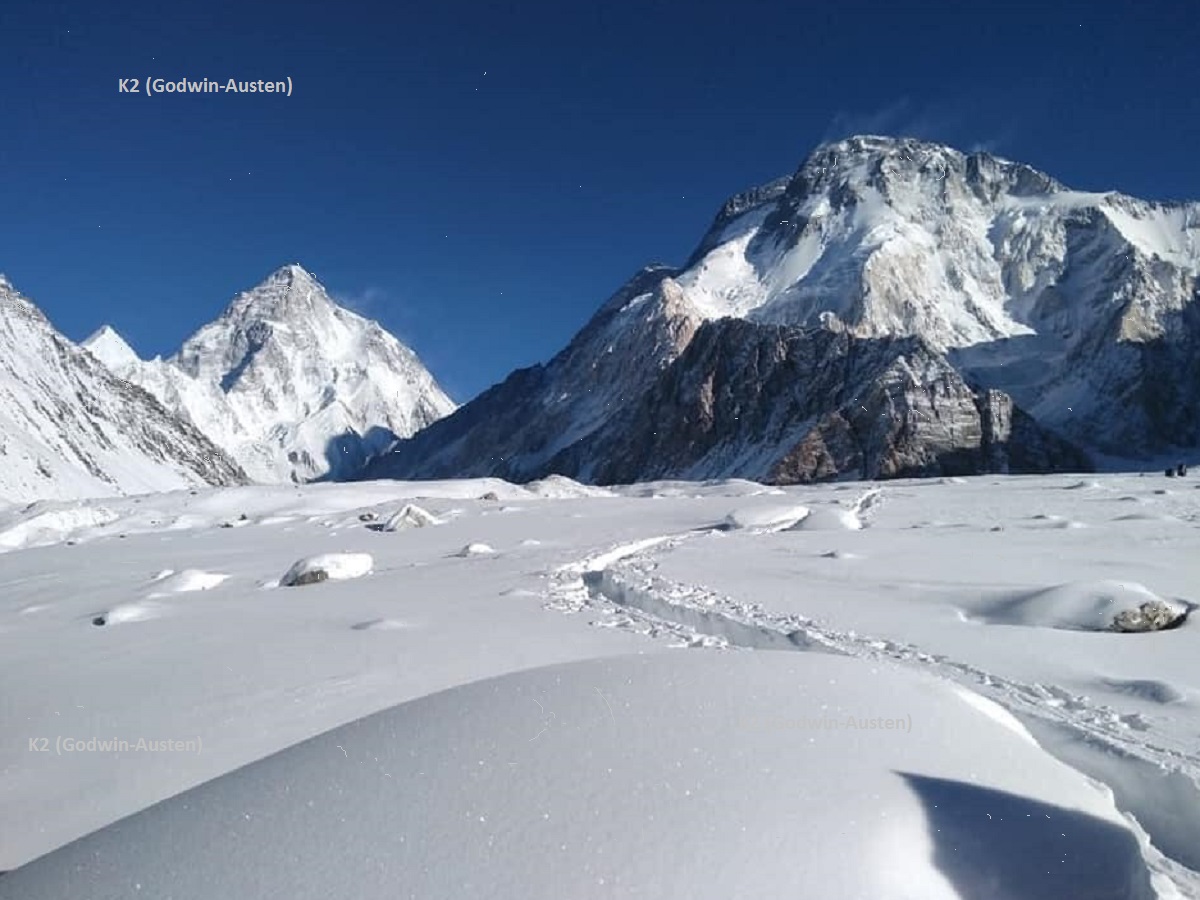
Towering over Pakistan’s Gilgit-Baltistan region, K2, also known as Godwin-Austen, isn’t just a mountain; it’s a legend. Soaring 8,611 meters (28,251 feet) into the sky, it holds the coveted title of the world’s second-highest peak, but its reputation as the “Savage Mountain” makes it a far more challenging climb than Everest. This icy giant beckons experienced mountaineers and adventure enthusiasts with its breathtaking beauty, formidable slopes, and a history filled with daring attempts and tragic consequences.
The name K2 is a simple yet iconic designation, originating from the Great Trigonometrical Survey of British India. However, the mountain also holds the name Godwin-Austen, bestowed upon it by early explorers in honor of Henry Godwin-Austen, a 19th-century geographer who first surveyed the region. This dual name reflects the mountain’s long history of exploration and its enduring allure for those who seek to conquer its slopes.
K2’s beauty is undeniable. Its pyramid-shaped peak, adorned with glaciers and carved by fierce winds, creates a majestic silhouette against the clear blue sky. The surrounding landscape, a tapestry of rugged peaks and glacial valleys, adds to the awe-inspiring grandeur. However, K2’s true appeal lies in the challenge it presents. Steeper slopes, unpredictable weather patterns, and a higher risk of avalanches make it a formidable test of skill, endurance, and mental fortitude.
The history of K2 is a testament to the human spirit’s unwavering pursuit of adventure. The first documented attempt to summit the peak in 1902 ended in failure, setting the stage for decades of unsuccessful expeditions. Finally, in 1954, an Italian team led by Ardito Desio achieved the historic first ascent, etching their names in mountaineering history. Since then, K2 has remained a coveted prize for the world’s most experienced climbers, with every successful summit a testament to human courage and perseverance.
While conquering K2 might be a dream reserved for the elite, the mountain’s allure extends beyond the realm of professional mountaineering. Trekkers can embark on challenging journeys to base camp, offering breathtaking views of the peak and surrounding glaciers. Photography enthusiasts can capture stunning images of the mountain’s grandeur, while armchair adventurers can delve into the rich history of expeditions and the stories of those who dared to challenge the “Savage Mountain.”
K2 is more than just a peak; it’s a symbol of human ambition, a testament to the power of nature, and a beacon for those who seek adventure in its purest form. So, whether you’re an aspiring mountaineer, a nature enthusiast, or simply someone captivated by stories of human courage, K2 promises to leave a lasting impression.
Read More About K2
Gasherbrum I (Hidden Peak)
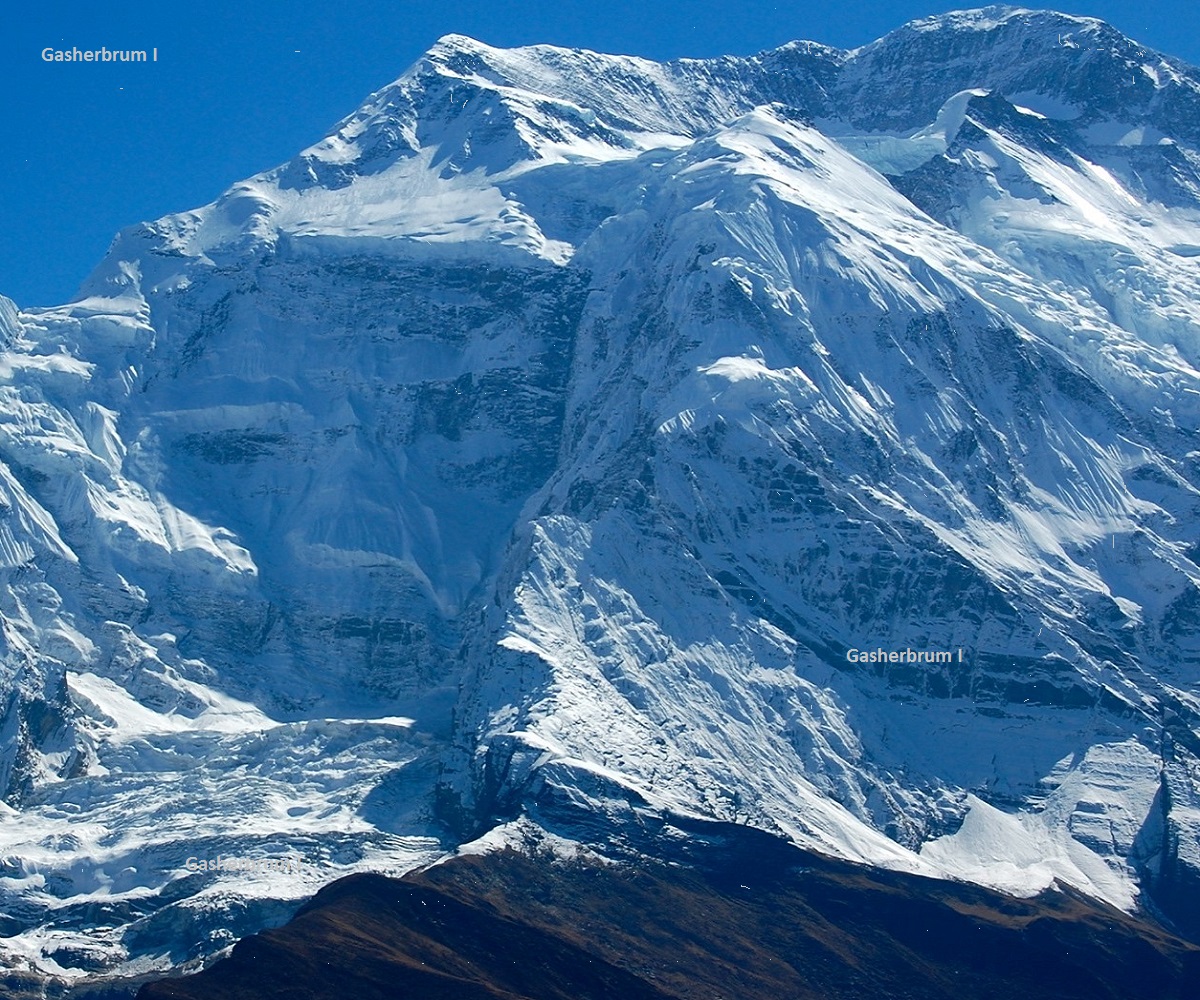
Towering amidst the colossal peaks of the Karakoram, Gasherbrum I, also known as Hidden Peak, isn’t just another mountain. It’s a titan shrouded in mystery, a formidable challenge for mountaineers, and a breathtaking spectacle for those seeking adventure in Pakistan’s Gilgit-Baltistan region. Standing tall at 8,080 meters (26,510 feet), Gasherbrum I ranks 11th highest in the world, yet its remoteness and challenging terrain earn it a reputation as one of the most difficult mountains to climb.
The name “Gasherbrum” translates to “beautiful mountain” in Balti, a fitting description for this majestic peak. However, the moniker “Hidden Peak” reflects its elusive nature. Nestled deep within the Karakoram range, Gasherbrum I remained largely unexplored until the mid-20th century, adding an air of intrigue to its mystique. This remoteness also contributes to the mountain’s formidable reputation. Reaching base camp requires a challenging trek through rugged terrain, testing the endurance of even seasoned adventurers.
But Gasherbrum I’s allure goes beyond its difficulty. Its beauty is undeniable. Glacier-clad slopes glint under the sun, contrasting with the jagged rock formations that define its silhouette. The surrounding landscape, a tapestry of snow-capped peaks and glacial valleys, creates a scene of awe-inspiring grandeur. For those fortunate enough to witness it firsthand, Gasherbrum I offers a glimpse into the raw power and breathtaking beauty of the Karakoram.
The history of Gasherbrum I is a testament to the human spirit’s unwavering pursuit of adventure. The first successful summit in 1958 by an American expedition marked a milestone in mountaineering history. Since then, the mountain has continued to challenge even the most experienced climbers, with each successful ascent a story of courage, skill, and perseverance. For those who choose not to scale its heights, Gasherbrum I offers a different kind of adventure.
Trekkers can embark on challenging journeys to base camp, offering stunning views of the peak and surrounding glaciers. Photography enthusiasts can capture the mountain’s dramatic beauty from afar, while armchair adventurers can delve into the history of expeditions and the stories of those who dared to challenge this “Hidden Peak.”
Gasherbrum I isn’t just another mountain on a list; it’s a symbol of nature’s power, a testament to human ambition, and a beacon for those who seek adventure beyond the ordinary. So, whether you’re an aspiring mountaineer, a nature enthusiast, or simply captivated by the world’s most enigmatic peaks, Gasherbrum I promises to leave a lasting impression.
Read More About Gasherbrum I
Broad Peak
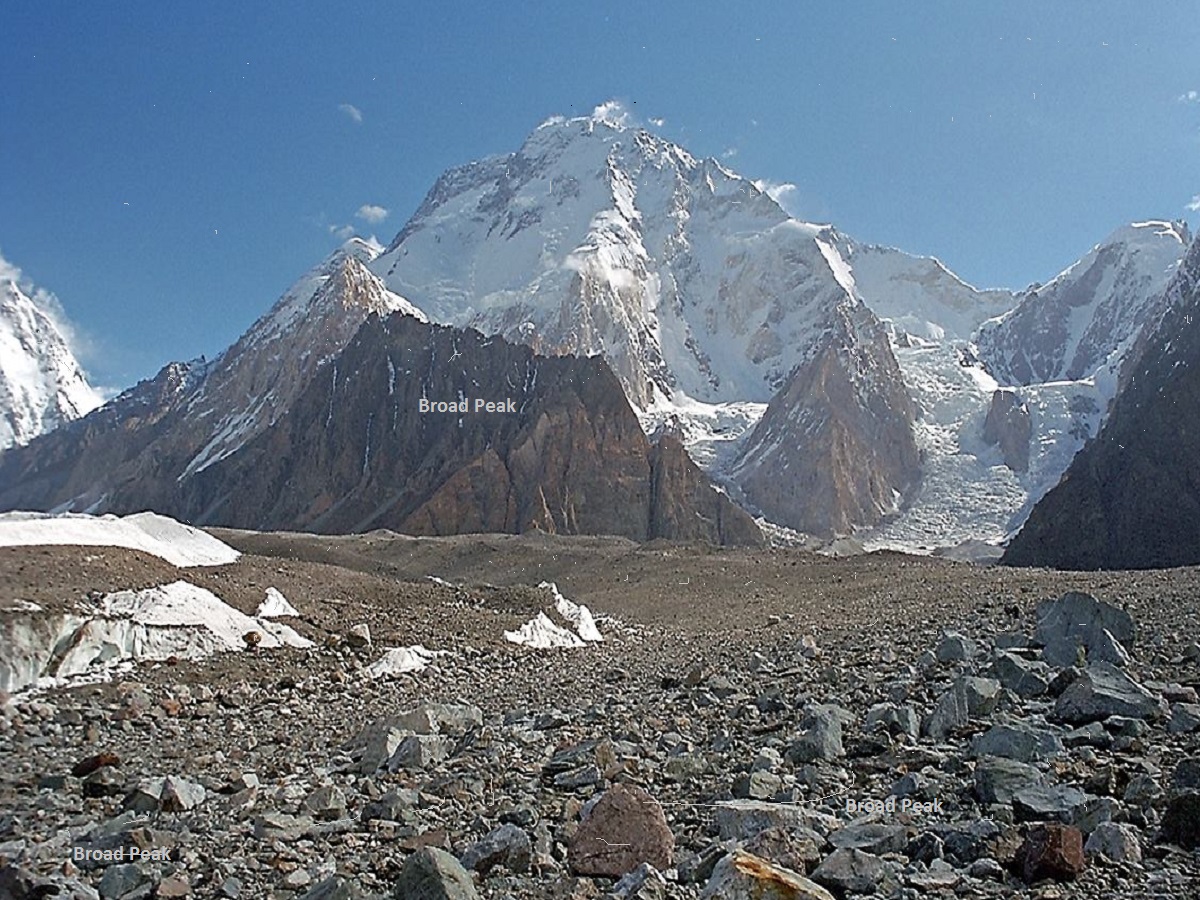
Nestled amidst the colossal peaks of the Karakoram range in Pakistan lies Broad Peak, a mountain that lives up to its name. Earning its moniker from its immense, broad summit plateau, Broad Peak offers a unique blend of breathtaking scenery, challenging yet approachable climbs, and a rich mountaineering history. While its 8,051-meter (26,414-foot) stature places it among the elite group of eight-thousanders, Broad Peak holds a reputation as one of the more attainable peaks in this category.
Unlike its formidable neighbor, K2, Broad Peak’s appeal lies in its relative accessibility. With gentler slopes compared to other eight-thousanders, it remains a significant challenge, but one that attracts experienced climbers seeking a different kind of test. The ascent still requires exceptional skill, physical fitness, and a healthy respect for the mountain’s dangers, but it offers a more achievable summit goal within the realm of possibility for seasoned mountaineers.
Beyond its climbing appeal, Broad Peak boasts breathtaking beauty. Its broad summit ridge, stretching for over 1.5 kilometers, dominates the surrounding landscape. Glaciers carve their paths down the slopes, feeding into the mighty Indus River that snakes through the valley below. The surrounding peaks of the Karakoram, including the majestic K2, create a dramatic backdrop for this impressive mountain.
The history of Broad Peak is intertwined with the golden age of Himalayan mountaineering. The first successful summit in 1957 by an Austrian expedition marked a significant achievement, paving the way for future ascents. Since then, Broad Peak has witnessed numerous expeditions, with each successful climb pushing the boundaries of human endurance and technical skill.
While conquering Broad Peak remains a dream reserved for the elite, the mountain’s allure extends beyond the realm of professional mountaineering. Trekkers can embark on challenging journeys to base camp, offering breathtaking panoramas of the peak and surrounding glaciers. Photography enthusiasts can capture stunning images of the mountain’s broad summit and dramatic slopes bathed in golden sunlight. And armchair adventurers can delve into the rich history of expeditions and the stories of those who dared to challenge this “Gentle Giant” of the Himalayas.
Whether you’re an aspiring mountaineer, a nature enthusiast seeking breathtaking vistas, or simply someone intrigued by the world’s most iconic peaks, Broad Peak promises a captivating journey. So, pack your bags, embrace the spirit of adventure, and get ready to be awestruck by this majestic giant of the Karakoram.
Read More About Broad Peak
Gasherbrum II
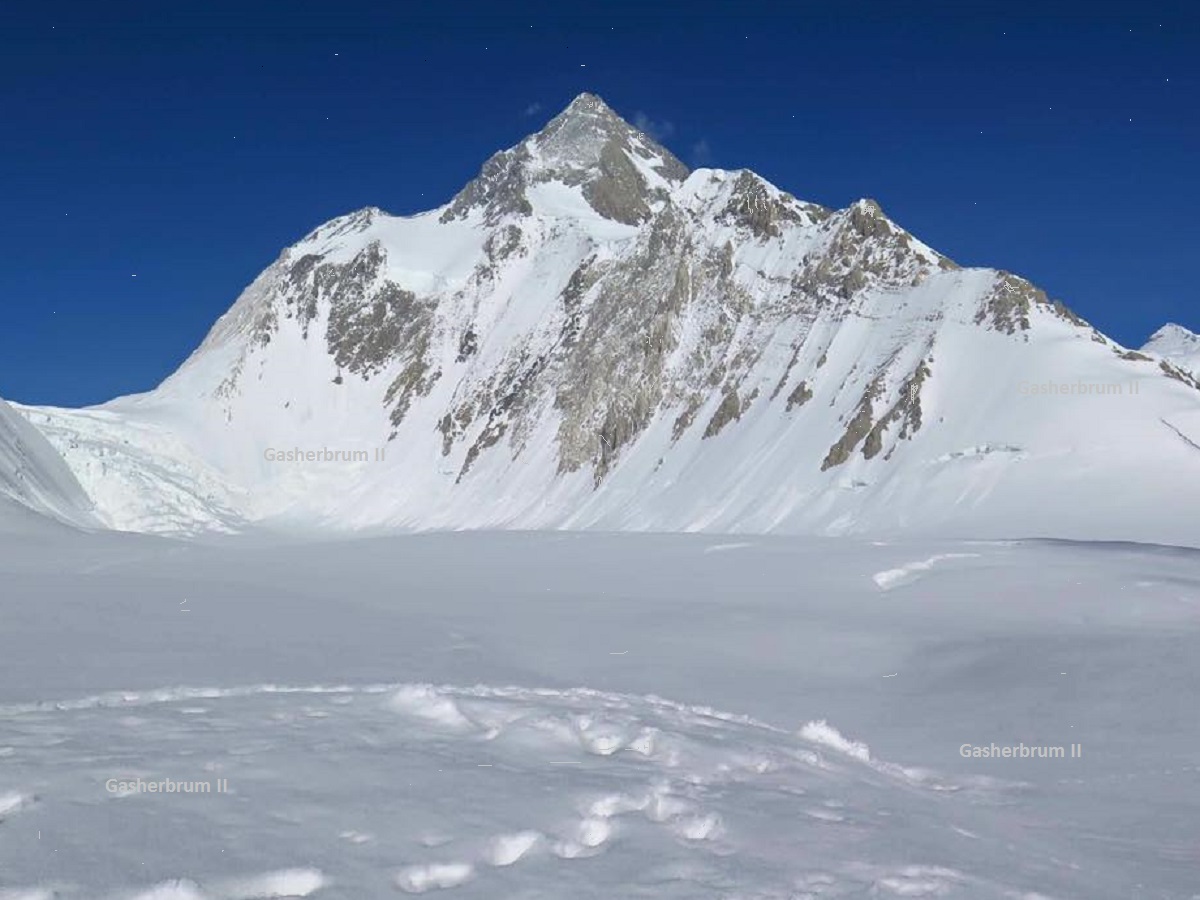
Towering amidst the colossal peaks of the Karakoram in Pakistan, Gasherbrum II, also known as K4, isn’t just another mountain. This formidable giant, nicknamed the “Shining Wall” for its prominent glacier face, beckons both seasoned mountaineers and adventurous trekkers with its breathtaking beauty, challenging climbs, and a rich history in Pakistan’s Gilgit-Baltistan region. Standing tall at 8,035 meters (26,362 feet), Gasherbrum II ranks 13th highest in the world, offering a unique blend of adventure and awe-inspiring scenery.
The name “Gasherbrum” translates to “beautiful mountain” in Balti, a fitting description for this majestic peak. “K4” is a simpler designation based on its position within the Karakoram survey. However, the moniker “Shining Wall” truly captures the essence of Gasherbrum II’s most striking feature – a vast expanse of glacial ice that shimmers under the sun, creating a breathtaking spectacle. This prominent ice face not only defines the mountain’s aesthetics but also presents a significant challenge for climbers, demanding a unique set of skills and strategies.
Beyond its challenging climbs, Gasherbrum II offers breathtaking beauty for all to experience. Rugged slopes lead up to the majestic summit pyramid, adorned with glaciers and carved by fierce winds. The surrounding landscape, a tapestry of snow-capped peaks and glacial valleys stretching as far as the eye can see, creates a scene of awe-inspiring grandeur. Whether you’re a seasoned climber or an avid trekker, Gasherbrum II promises breathtaking vistas that leave a lasting impression.
The history of Gasherbrum II is a testament to the human spirit’s unwavering pursuit of adventure. The first successful summit in 1956 by an Austrian expedition marked a significant milestone in mountaineering history. Since then, the mountain has continued to attract climbers seeking a different kind of challenge – a test of skill, endurance, and the ability to navigate complex glacial terrain.
For those who choose not to scale its heights, Gasherbrum II offers a different kind of adventure. Trekkers can embark on challenging journeys to base camp, a rewarding experience that offers stunning views of the peak and surrounding glaciers. The Baltoro Glacier trek, leading to the base camp of Gasherbrum II, is renowned for its breathtaking scenery and diverse landscapes, making it a bucket-list experience for many adventure enthusiasts.
Gasherbrum II isn’t just another mountain on a map; it’s a symbol of nature’s power, a testament to human ambition, and a beacon for those who seek adventure in all its forms. Whether you’re an aspiring mountaineer, a nature lover seeking breathtaking treks, or simply someone captivated by the world’s most iconic peaks, Gasherbrum II promises to leave a lasting impression.
Read More About Gasherbrum II
Gasherbrum IV
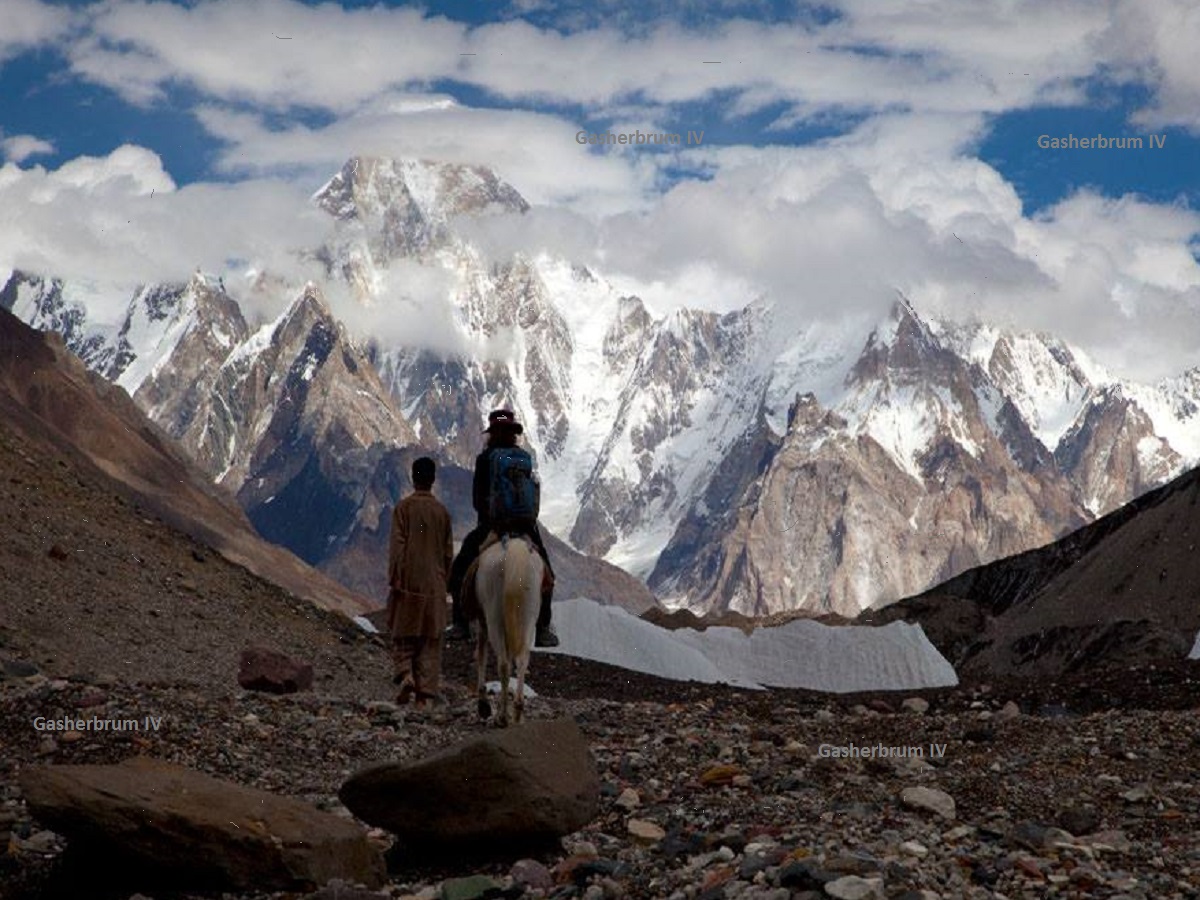
Towering amidst the colossal peaks of the Karakoram in Pakistan, Gasherbrum IV isn’t your average eight-thousander. Often overshadowed by its more prominent neighbors, this formidable giant has earned the nickname “Hidden Gem” for its remoteness and challenging terrain. Yet, for seasoned mountaineers seeking a unique test of skill and resilience, Gasherbrum IV beckons with its breathtaking beauty, dramatic slopes, and a history of daring ascents. Standing tall at 7,925 meters (26,001 feet), it ranks 17th highest in the world, offering a challenge that’s both exhilarating and humbling.
While the origin of the name “Gasherbrum” remains unclear, some believe it translates to “beautiful mountain” in Balti, a fitting description for the surrounding peaks. However, Gasherbrum IV’s remoteness contributes to its “hidden” status. Nestled deep within the Karakoram, reaching base camp requires a challenging trek through rugged valleys, testing the endurance of even experienced adventurers. This isolation also adds to the mountain’s mystique, attracting climbers seeking a more pristine and less crowded experience compared to other eight-thousanders.
Beyond the challenge, Gasherbrum IV boasts undeniable beauty. Sheer rock faces, sculpted by wind and time, rise majestically towards the sky. The imposing West Face, often bathed in the golden hues of sunset, is a sight to behold. Glaciers snake down from the summit, feeding into the mighty glacial systems that define the Karakoram landscape. The surrounding peaks, including the giants K2 and Broad Peak, create a dramatic backdrop for this impressive mountain.
The history of Gasherbrum IV is relatively short compared to other Himalayan giants. The first successful summit in 1958 by an Italian expedition marked a significant achievement, but ascents remain rare due to the mountain’s technical difficulty and remote location. Each successful climb on Gasherbrum IV is a testament to the climber’s exceptional skill, meticulous planning, and a healthy dose of courage.
While conquering Gasherbrum IV is reserved for the elite, the allure of this “Hidden Gem” extends beyond the realm of professional mountaineering. Trekkers with a taste for adventure can embark on challenging journeys to base camp, offering breathtaking panoramas of the peak and surrounding glaciers. Photography enthusiasts can capture stunning images of the mountain’s dramatic rock faces and serene glacial valleys. And armchair adventurers can delve into the history of expeditions and the stories of those who dared to challenge this formidable peak.
Gasherbrum IV isn’t just another mountain on a list; it’s a symbol of nature’s raw power, a test of human endurance, and a beacon for those who seek a unique and challenging adventure. So, whether you’re an aspiring mountaineer, a nature lover seeking breathtaking landscapes, or simply someone intrigued by the world’s most remote peaks, Gasherbrum IV promises a captivating journey.
Read More About Gasherbrum IV
Masherbrum
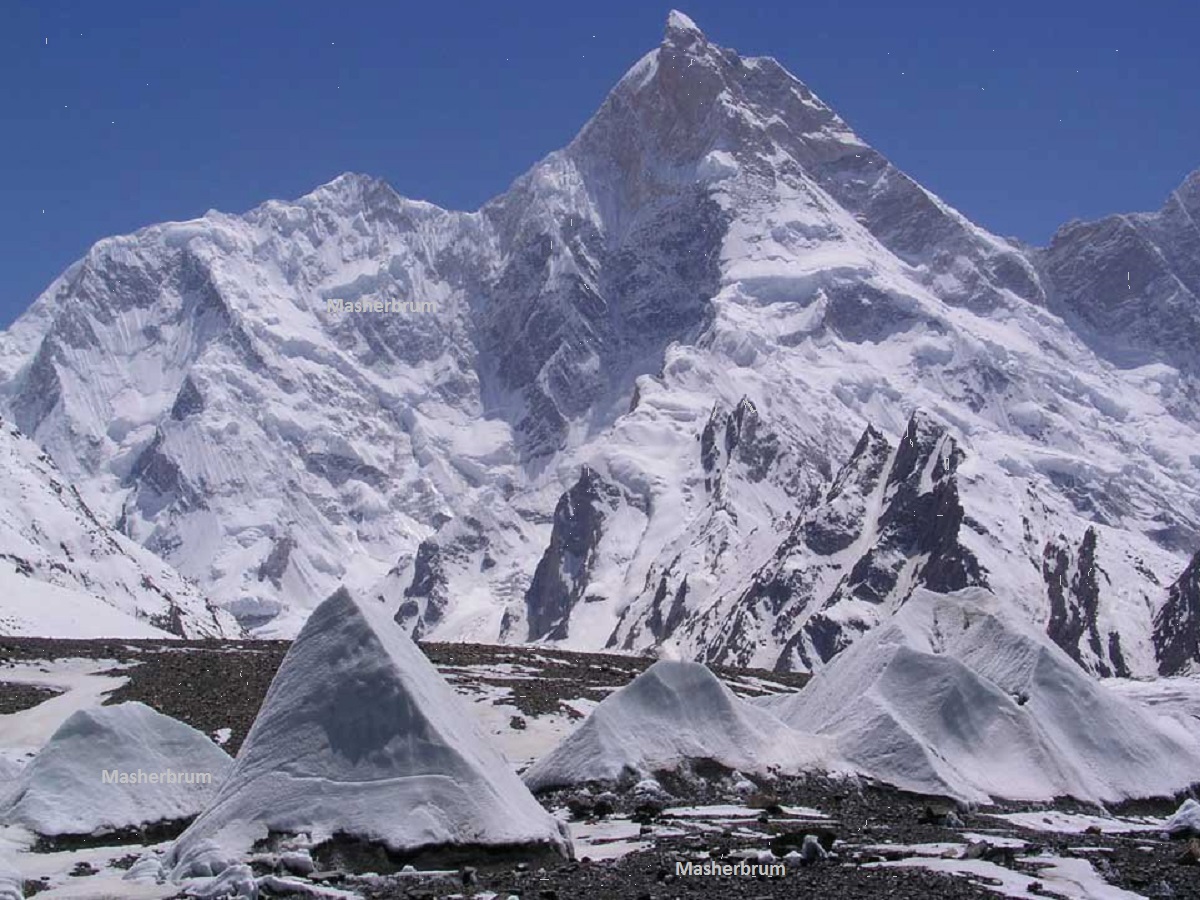
Towering amidst the colossal peaks of the Karakoram in Pakistan’s Gilgit-Baltistan region, Masherbrum isn’t just another mountain; it’s a captivating vision. Soaring 7,821 meters (25,660 feet) into the sky, this majestic pyramid-shaped peak beckons mountaineers and adventure enthusiasts with its awe-inspiring beauty, formidable slopes, and a rich history of exploration. While not as widely known as its eight-thousander neighbors, Masherbrum offers a unique challenge and a chance to experience the raw power and splendor of the Karakoram.
The name “Masherbrum” translates to “mountain splitting the head” in the local Balti language, possibly referencing the peak’s distinctive pyramid shape that appears to cleave the sky. This unique form sets Masherbrum apart from the surrounding giants, making it a recognizable landmark in the Karakoram. The mountain’s imposing south face, a near-vertical wall of rock and ice, presents a formidable challenge for even the most experienced climbers, demanding exceptional technical skill and a healthy dose of respect for the mountain’s dangers.
Beyond its challenging climbs, Masherbrum boasts breathtaking beauty for all to experience. Its near-perfect pyramid shape, a testament to millennia of glacial sculpting, dominates the surrounding landscape. Glaciers snake down the mountain’s flanks, feeding into the mighty Indus River system that carves its path through the valleys below. The surrounding peaks of the Karakoram, including giants like K2 and Broad Peak, create a dramatic backdrop for this captivating mountain.
The history of Masherbrum is a testament to the human spirit’s unwavering pursuit of adventure. The first successful summit in 1960 by a Japanese expedition marked a significant milestone, paving the way for future ascents. Since then, Masherbrum has remained a coveted prize for experienced climbers, with each successful summit pushing the boundaries of human skill and endurance.
While scaling the peak remains a dream reserved for the elite, Masherbrum offers a different kind of adventure for others. Trekkers with a taste for adventure can embark on challenging journeys to base camp, offering stunning views of the peak and surrounding glaciers. The Baltoro Glacier trek, which leads to the base camp of Masherbrum, is renowned for its breathtaking scenery and diverse landscapes, making it a bucket-list experience for many adventure enthusiasts.
Masherbrum isn’t just another peak on a map; it’s a symbol of nature’s power, a testament to human ambition, and a beacon for those who seek adventure in all its forms. Whether you’re an aspiring mountaineer, a nature lover seeking breathtaking vistas, or simply someone intrigued by the world’s most captivating mountains, Masherbrum promises a lasting impression.
Read More About Masherbrum
Rakaposhi
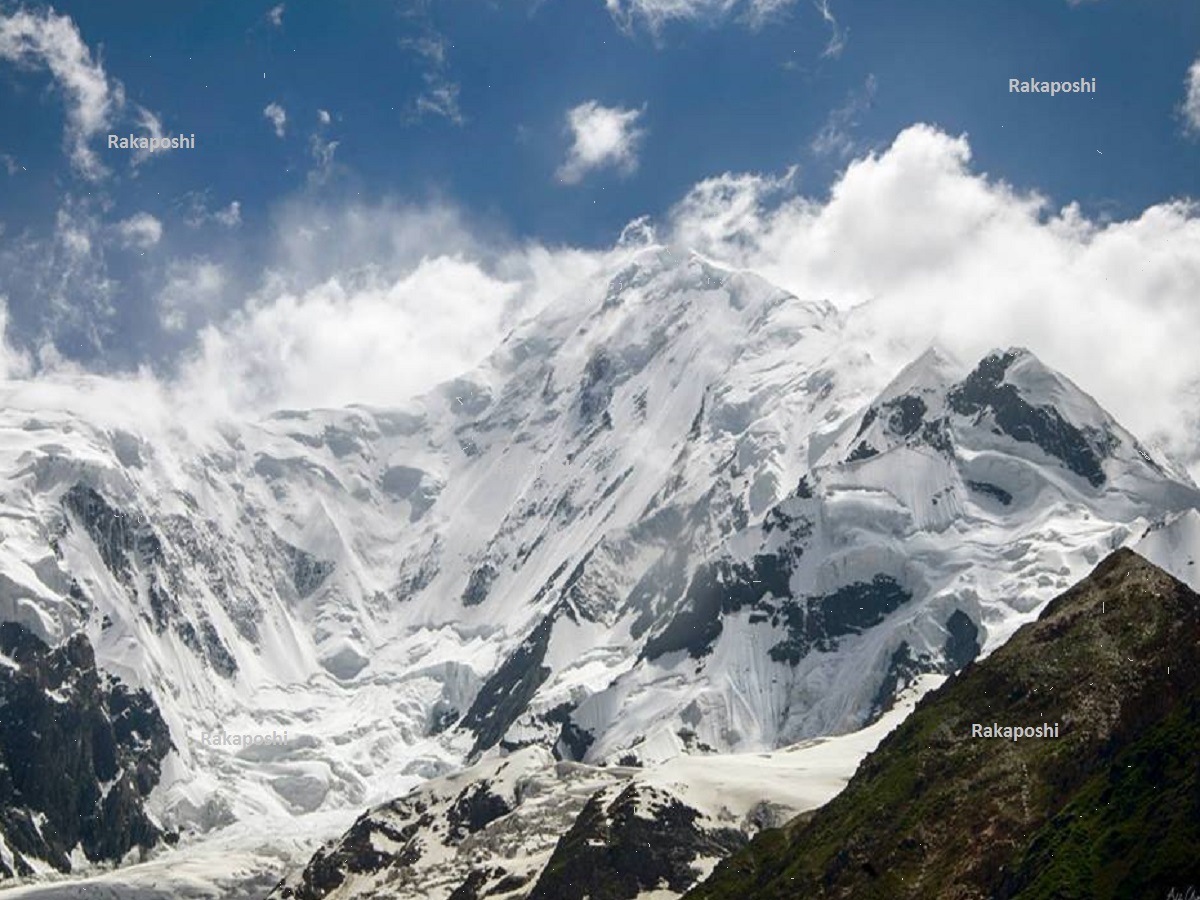
Nestled amidst the colossal peaks of Pakistan’s Karakoram range lies Rakaposhi, a mountain that lives up to its names. Meaning “Snow-Covered” in the local language and nicknamed the “Shining Wall,” Rakaposhi boasts a captivating blend of breathtaking beauty, challenging climbs, and a rich history in the Gilgit-Baltistan region. Standing tall at 7,788 meters (25,551 feet), it ranks 27th highest globally, yet holds a reputation for dramatic prominence and awe-inspiring scenery.
Rakaposhi’s local name aptly describes its defining characteristic – a vast expanse of pristine snow and glaciers that shimmer under the sun. This “Shining Wall” dominates the surrounding landscape, a testament to the raw power of nature. However, Rakaposhi offers more than just visual splendor. Its immense rise from the valley floor – with over 5,000 meters of elevation gain between base camp and summit – creates a formidable challenge for mountaineers, demanding exceptional physical fitness, technical skill, and a healthy respect for the mountain’s dangers.
Beyond the realm of extreme climbing, Rakaposhi offers a captivating experience for all. Trekkers can embark on challenging journeys to base camp, offering breathtaking panoramas of the peak and surrounding glaciers. For those seeking a more relaxed pace, the sight of Rakaposhi rising majestically above the Hunza Valley is awe-inspiring in itself. The vibrant turquoise waters of nearby Attabad Lake, a natural wonder created by a landslide, add another layer of beauty to the scene.
The history of Rakaposhi is intertwined with the golden age of Himalayan mountaineering. The first successful summit in 1958 by a British-Pakistani expedition marked a significant achievement, paving the way for future ascents. Since then, Rakaposhi has continued to attract climbers seeking a unique test of skill and endurance.
While conquering Rakaposhi remains a dream reserved for the elite, the allure of the “Shining Wall” extends beyond the realm of professional mountaineering. Hikers can explore the scenic trails around the mountain, encountering charming villages and experiencing the warm hospitality of the local Wakhi people. Photographers can capture stunning images of the mountain’s dramatic rise from the valley floor or its reflection in the serene waters of Attabad Lake.
Rakaposhi isn’t just another peak on a climber’s list; it’s a symbol of nature’s grandeur, a testament to human ambition, and a beacon for those who seek adventure in all its forms. Whether you’re an aspiring mountaineer, a nature enthusiast seeking breathtaking vistas, or simply someone captivated by the world’s most iconic mountains, Rakaposhi promises a lasting impression.
Read More About Rakaposhi
Nanga Parbat
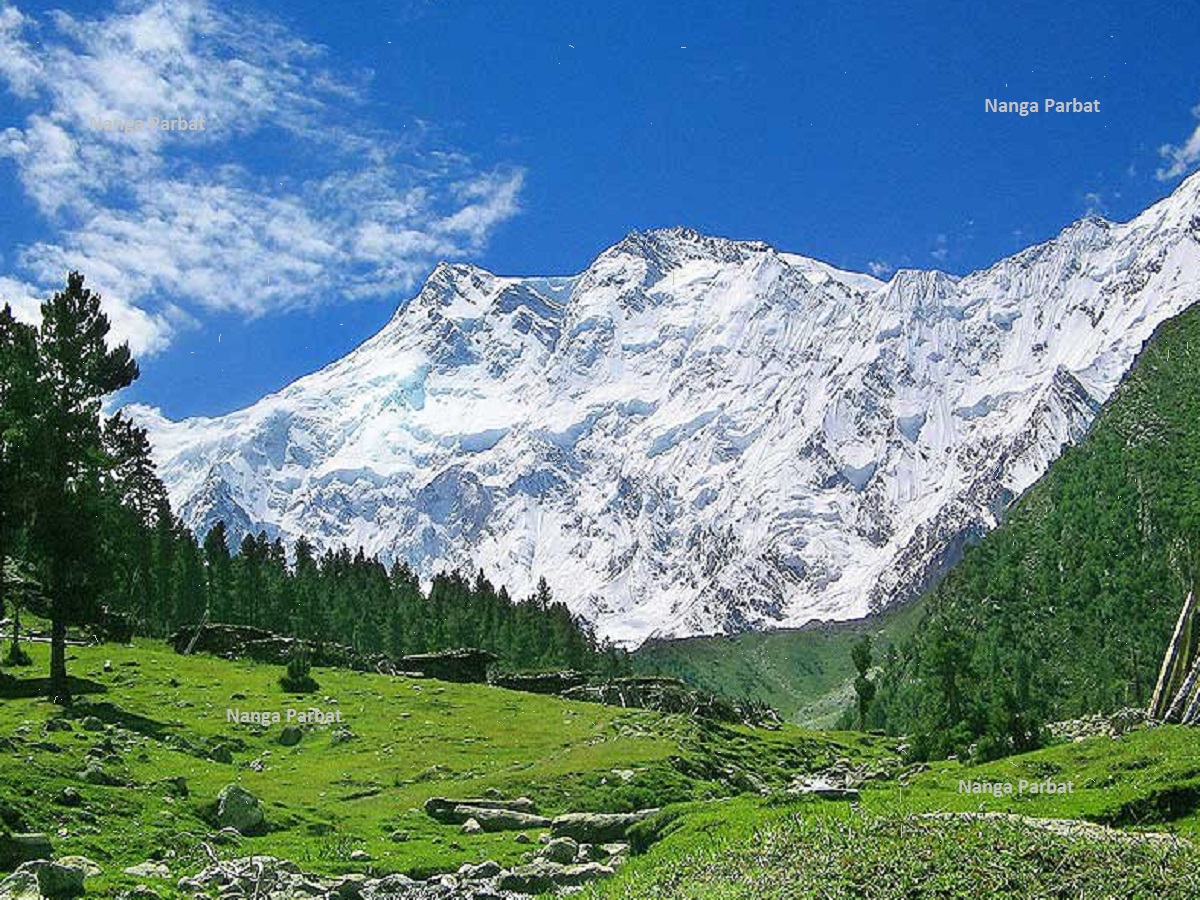
Towering over Pakistan’s Gilgit-Baltistan region, Nanga Parbat isn’t just a mountain; it’s a legend. Soaring 8,126 meters (26,660 feet) into the sky, it holds the coveted title of the world’s ninth-highest peak. However, its nickname, the “Killer Mountain,” reflects its formidable reputation. Nanga Parbat’s beauty is undeniable, but its slopes are steeped in history – a history of daring attempts, tragic consequences, and the ultimate triumph of human spirit. This captivating giant beckons experienced mountaineers and adventure enthusiasts with its breathtaking scenery, challenging climbs, and a story that unfolds with every step towards the summit.
The name “Nanga Parbat” itself is a tale of two languages. In Sanskrit, it translates to “Naked Mountain,” possibly referencing its stark, snow-capped peak that rises dramatically from the surrounding valleys. Locally, it’s also known as Diamer, meaning “King of the Mountains,” a fitting title for this formidable giant. Nanga Parbat’s beauty is undeniable. Its colossal pyramid shape dominates the landscape, with glaciers carving their paths down its slopes and feeding into the mighty Indus River below. For those brave enough to challenge it, the summit offers a breathtaking panorama of the Himalayas and the Karakoram.
However, Nanga Parbat’s true story lies in its history. The first documented attempt to summit the peak in 1895 tragically ended in failure, setting the stage for decades of unsuccessful expeditions. The mountain’s steep slopes, unpredictable weather patterns, and treacherous terrain claimed the lives of numerous climbers, earning its grim nickname. Finally, in 1953, Austrian climber Hermann Buhl achieved the historic first ascent, etching his name in mountaineering history and proving that even the “Killer Mountain” could be conquered.
While conquering Nanga Parbat remains a dream reserved for the elite, the allure of this legendary peak extends beyond the realm of professional mountaineering. Trekkers can embark on challenging journeys to base camp, offering breathtaking views of the mountain and surrounding glaciers. For those seeking a cultural immersion, nearby villages offer a glimpse into the traditional way of life of the local people.
The story of Nanga Parbat isn’t just about climbing; it’s a testament to human resilience, the pursuit of adventure, and the respect for the raw power of nature. It’s a mountain that demands respect, inspires awe, and beckons those who seek to push their limits and experience the thrill of adventure in one of the world’s most captivating mountain ranges.
So, whether you’re an aspiring mountaineer, a history buff, or simply someone intrigued by nature’s most formidable peaks, Nanga Parbat promises a captivating journey. Pack your bags, embrace the spirit of adventure, and prepare to be humbled by the “Killer Mountain.”
Read More About Nanga Parbat
Khunjerab Pass
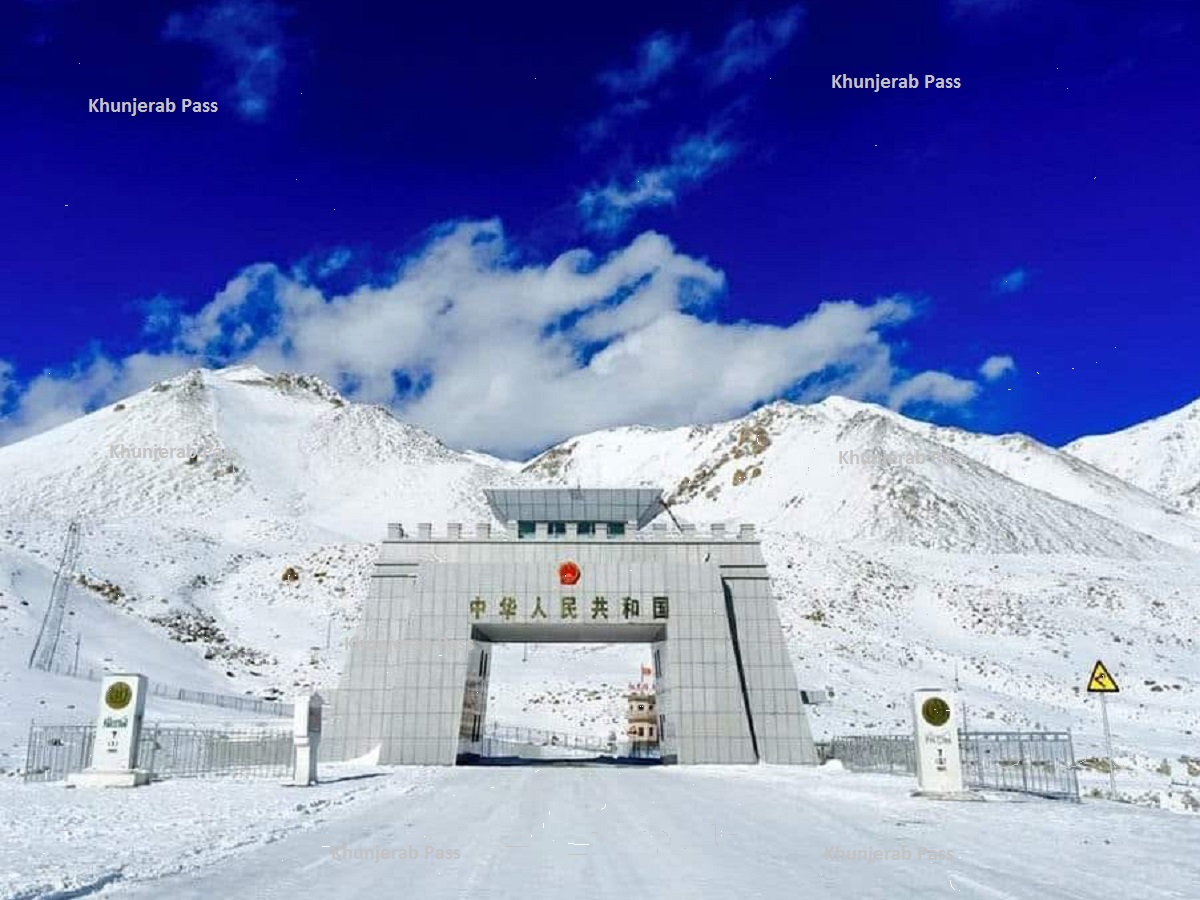
Straddling the mighty Karakoram mountain range on the border between Pakistan and China lies Khunjerab Pass, a place where adventure meets history. Nicknamed the “Roof of the World,” this high mountain pass isn’t just a geographical landmark; it’s a vital trade route, a symbol of cultural exchange, and a breathtaking destination for explorers with a taste for high-altitude adventure. Standing tall at a staggering 4,693 meters (15,397 feet), Khunjerab Pass offers a unique blend of strategic importance, breathtaking scenery, and a glimpse into the historical ties between these two Asian giants.
The name “Khunjerab” itself is a fascinating blend of languages. Derived from Wakhi words – “Khun” meaning blood and “Jerav” meaning spring water or waterfall – it paints a poetic picture of the pass’s character. This strategic location has served as a vital trade route for centuries, connecting the cultures and economies of Pakistan and China. Today, the Khunjerab Pass serves as the highest paved international border crossing globally, showcasing the marvel of human engineering amidst a harsh yet awe-inspiring landscape.
Beyond its historical significance, Khunjerab Pass boasts breathtaking beauty. Rugged mountains, sculpted by wind and time, rise dramatically from the desolate plateau. Glaciers snake down from the surrounding peaks, feeding into the mighty Indus River system that carves its path through the valleys below. The vast expanse of the Karakoram unfolds before your eyes, offering a panoramic vista that leaves a lasting impression.
The history of Khunjerab Pass is intertwined with the ancient Silk Road trade routes that connected East and West. While the exact timeline of its use remains unclear, evidence suggests it played a role in facilitating trade for centuries. In the modern era, the construction of the Karakoram Highway in the 1960s further solidified the pass’s importance as a vital link between Pakistan and China. This monumental engineering feat, completed with the help of thousands of laborers from both countries, stands as a testament to human cooperation in the face of challenging terrain.
While traversing the Khunjerab Pass itself is typically restricted due to its high altitude and border security protocols, the surrounding region offers a wealth of adventure opportunities. Trekkers can embark on challenging journeys to base camps of nearby peaks, offering stunning views of the Karakoram and a chance to experience the raw power of these colossal mountains. Nature enthusiasts can explore the unique flora and fauna that have adapted to this harsh environment.
Khunjerab Pass isn’t just a point on a map; it’s a symbol of human achievement, a bridge between cultures, and a window into the awe-inspiring beauty of the Karakoram. Whether you’re a history buff fascinated by ancient trade routes, an adventurer seeking high-altitude thrills, or simply someone captivated by breathtaking mountain landscapes, Khunjerab Pass promises a journey that will stay with you for years to come.
Read More About Khunjerab Pass
Overall
Gilgit-Baltistan isn’t just a region on a map; it’s a tapestry woven with breathtaking landscapes, thrilling adventures, and rich cultural heritage. From the towering peaks of Gasherbrum IV and Nanga Parbat to the serene beauty of Fairy Meadows and the glacial majesty of Baltoro Valley, Gilgit-Baltistan offers something for every kind of traveler.
Whether you’re a seasoned mountaineer seeking a challenging climb, a nature enthusiast yearning for breathtaking vistas, or a trekker looking for a tranquil escape, Gilgit-Baltistan promises an unforgettable experience. Immerse yourself in the warm hospitality of the local people, explore ancient forts and historical sites, and witness a unique way of life that thrives in harmony with the mountains.
So, pack your bags, embrace the spirit of adventure, and prepare to be captivated by the magic of Gilgit-Baltistan. This region is not just a destination; it’s a journey that will leave you breathless, inspired, and forever in awe of the wonders it holds.

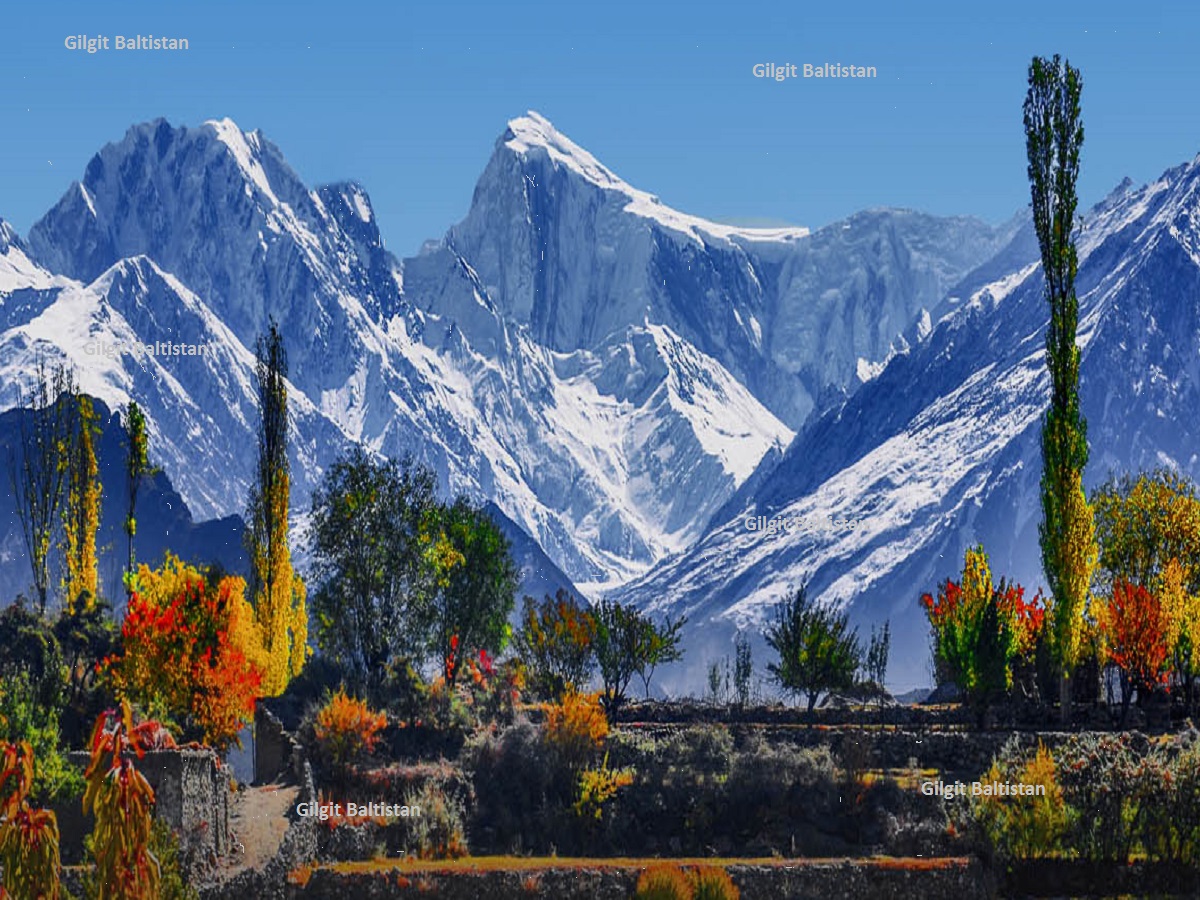
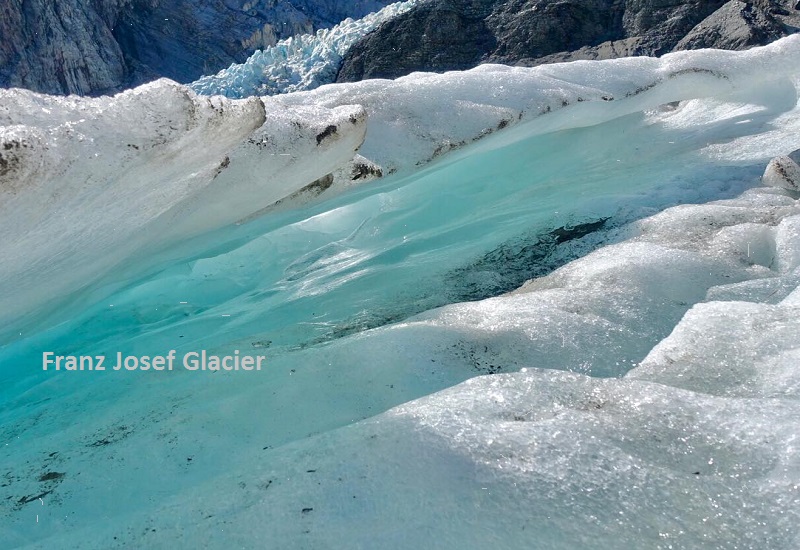
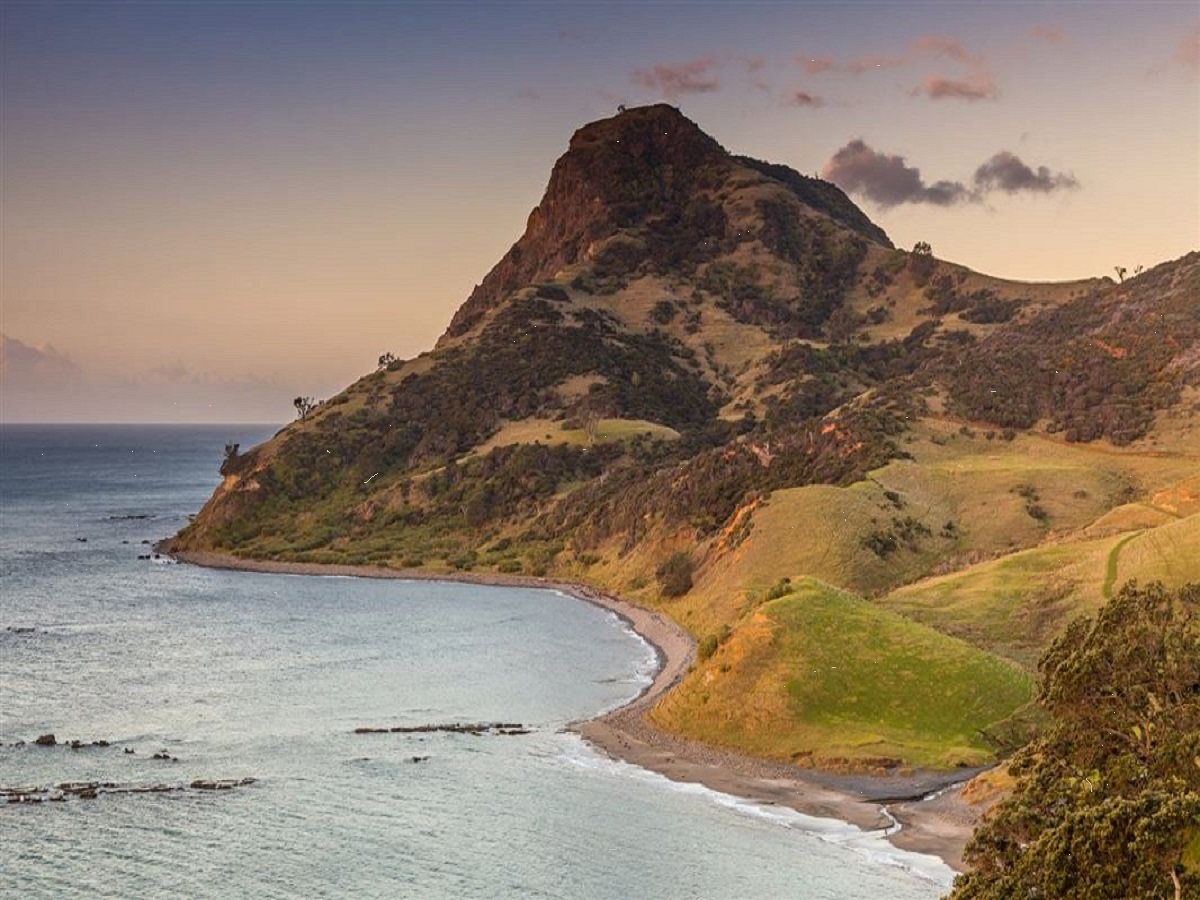

Leave a Reply